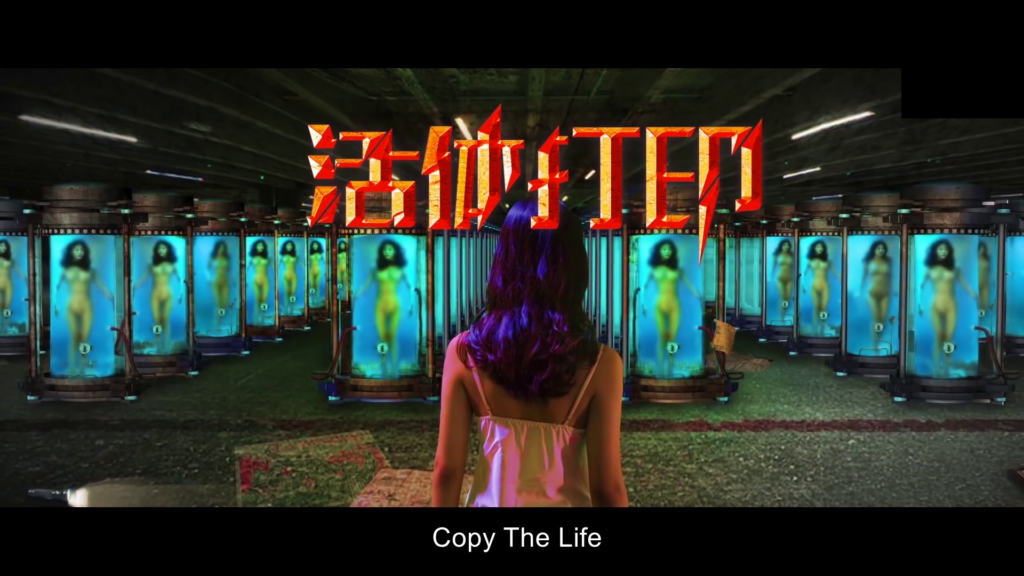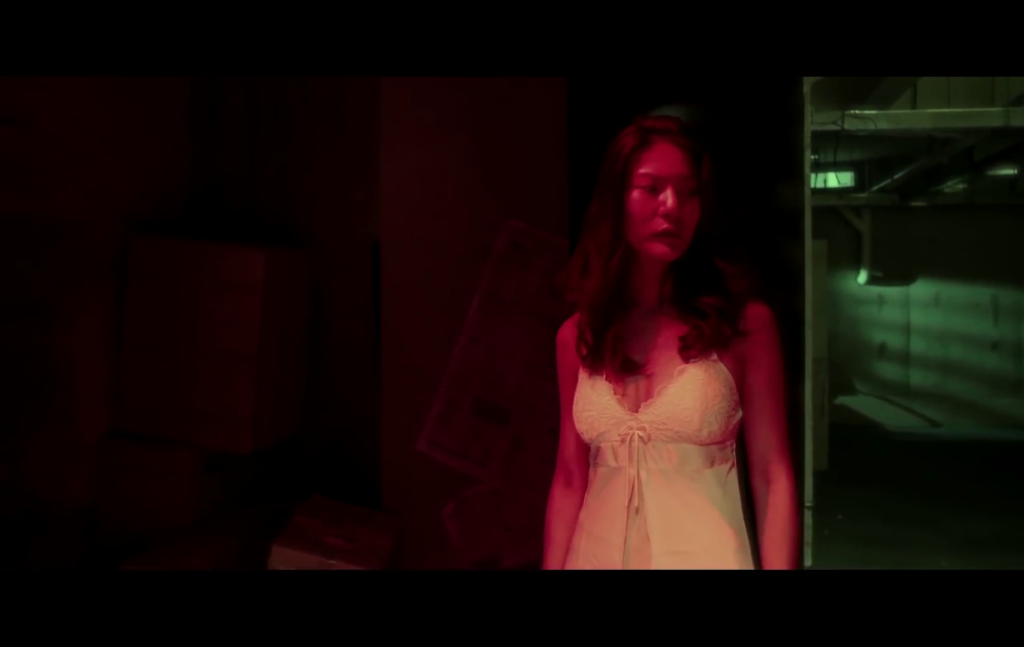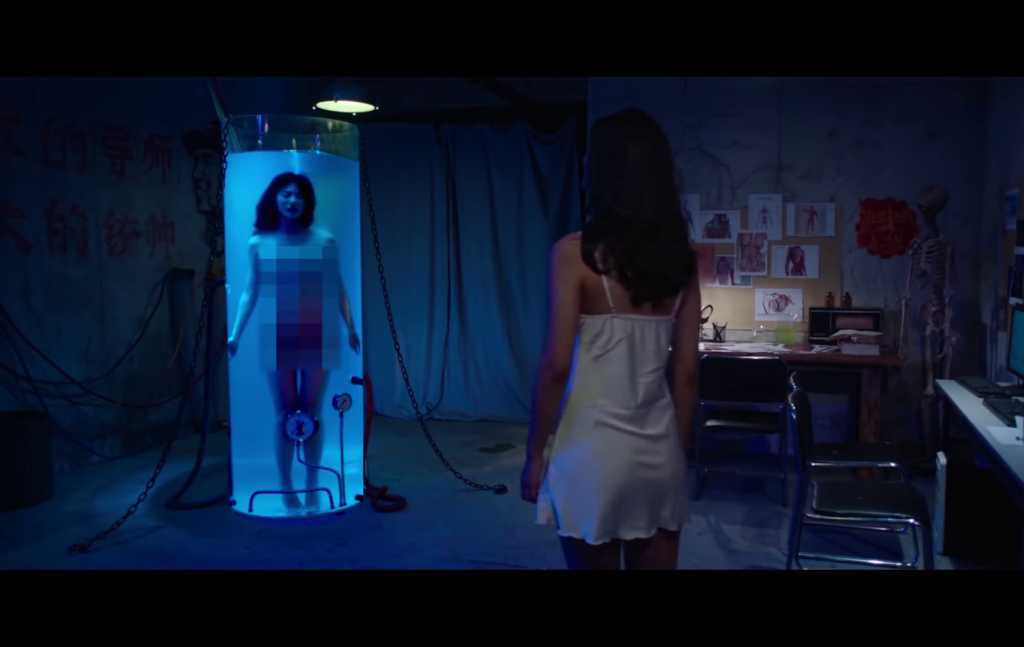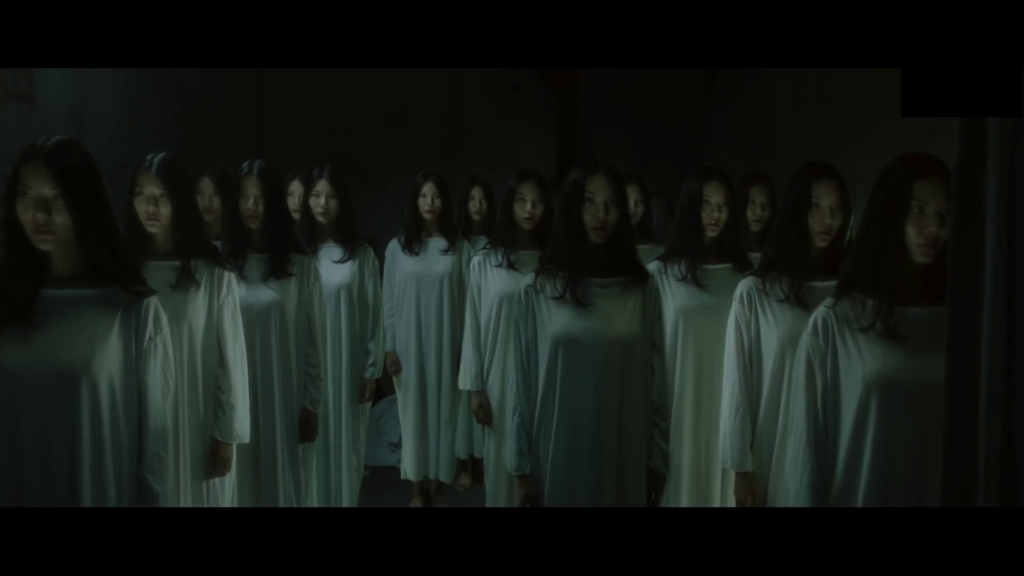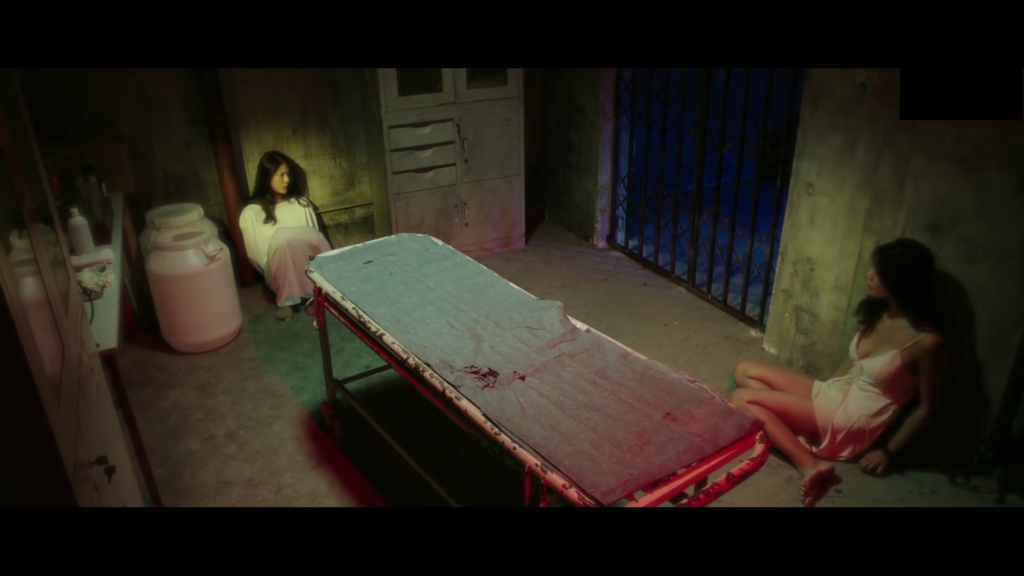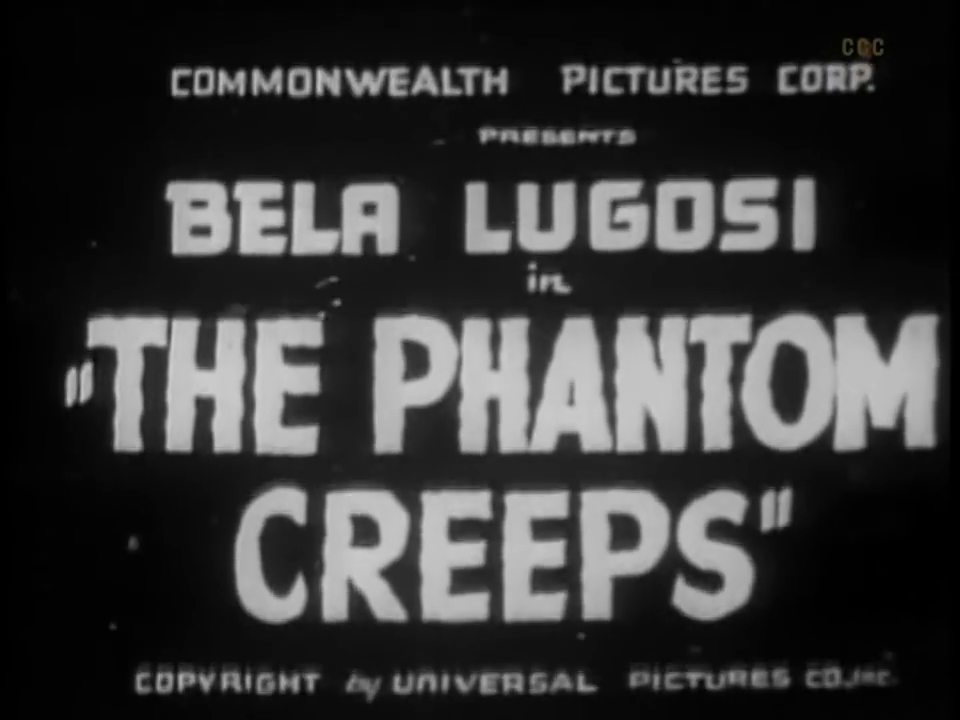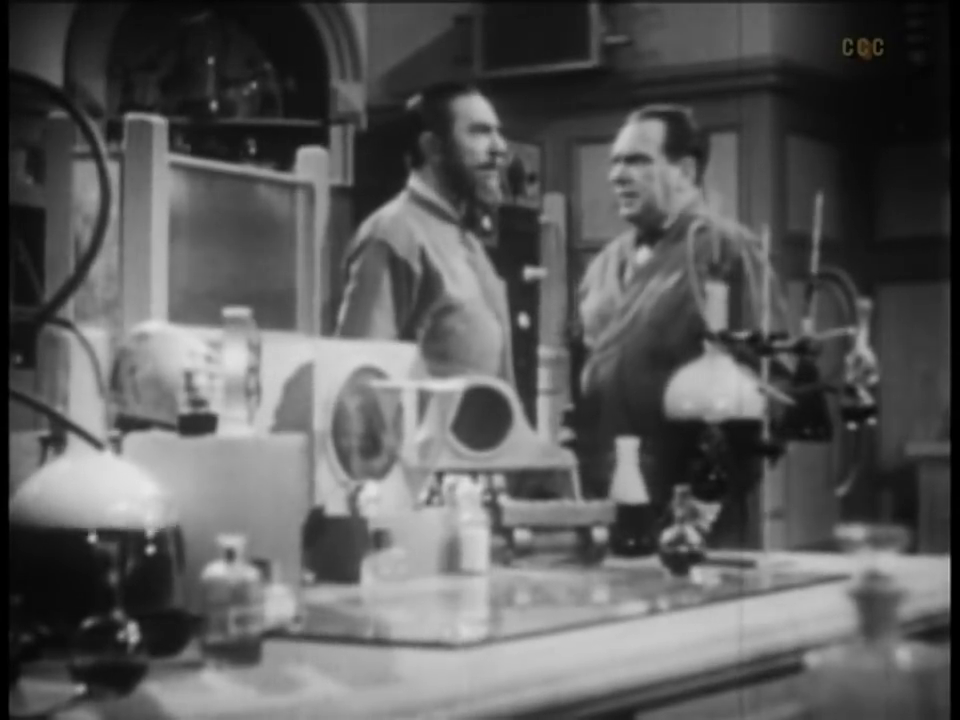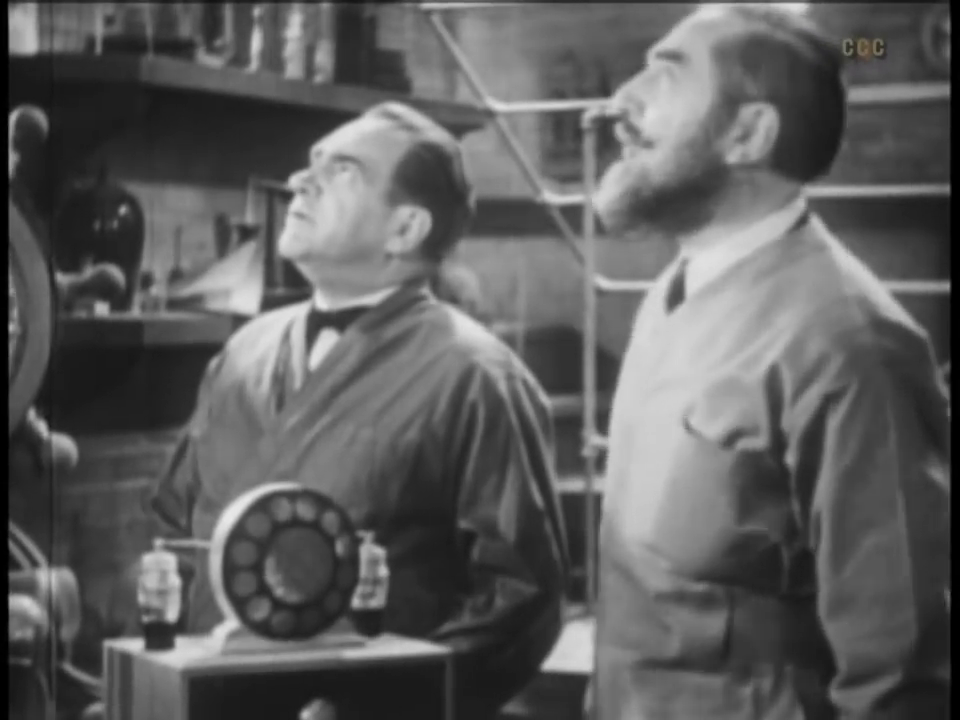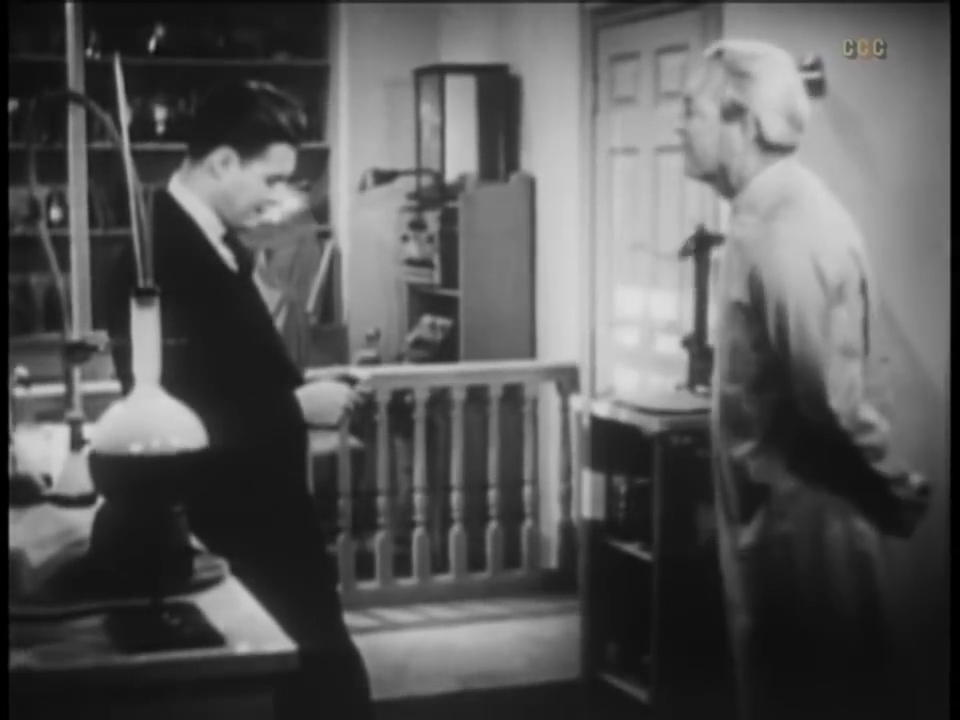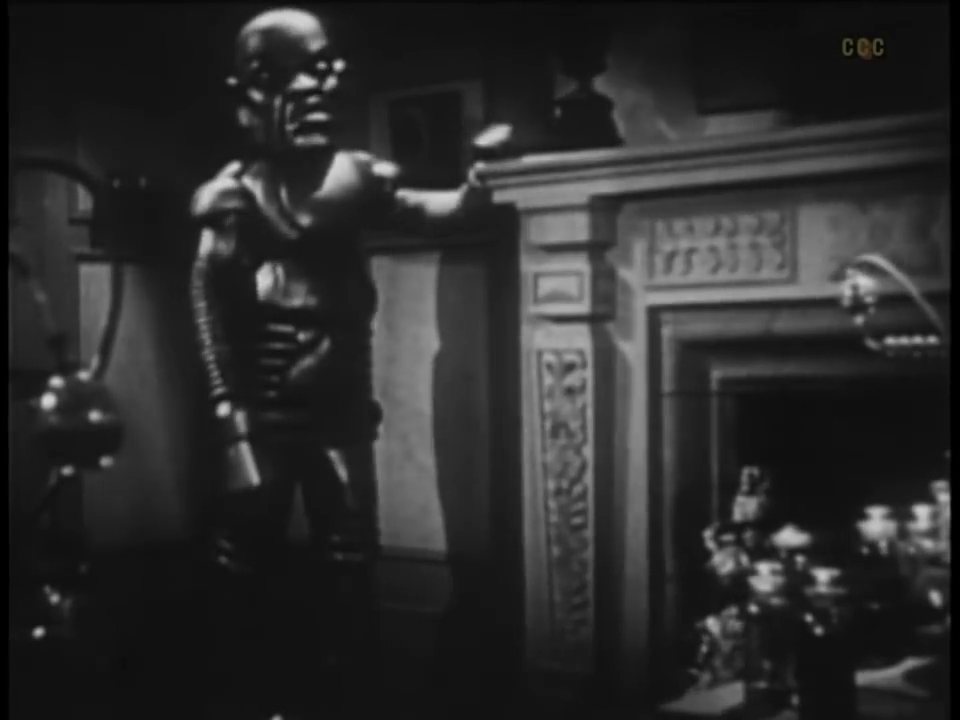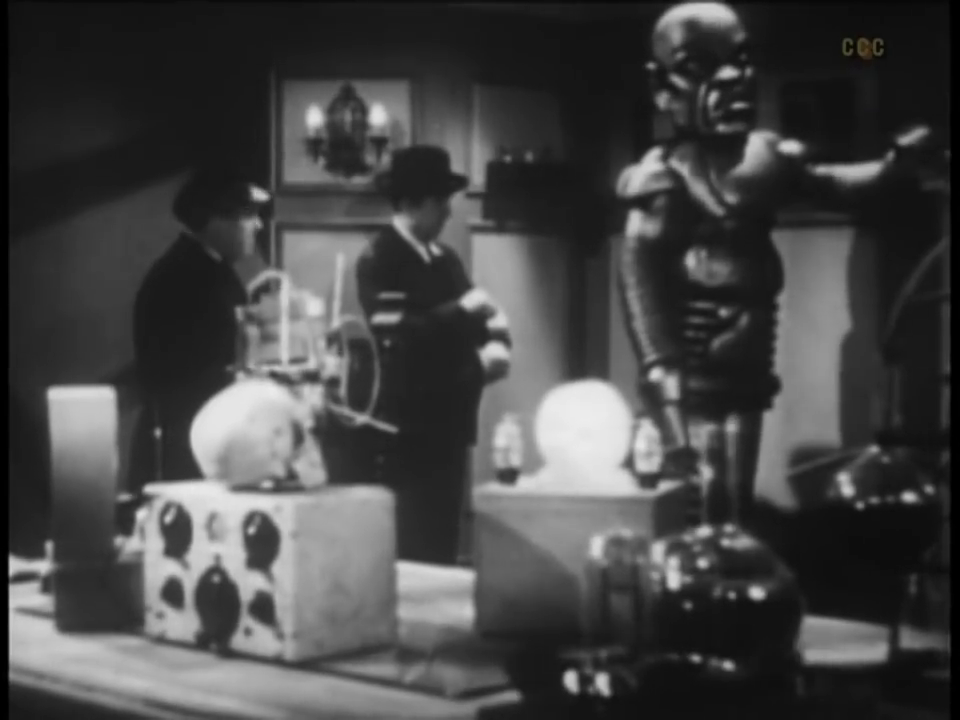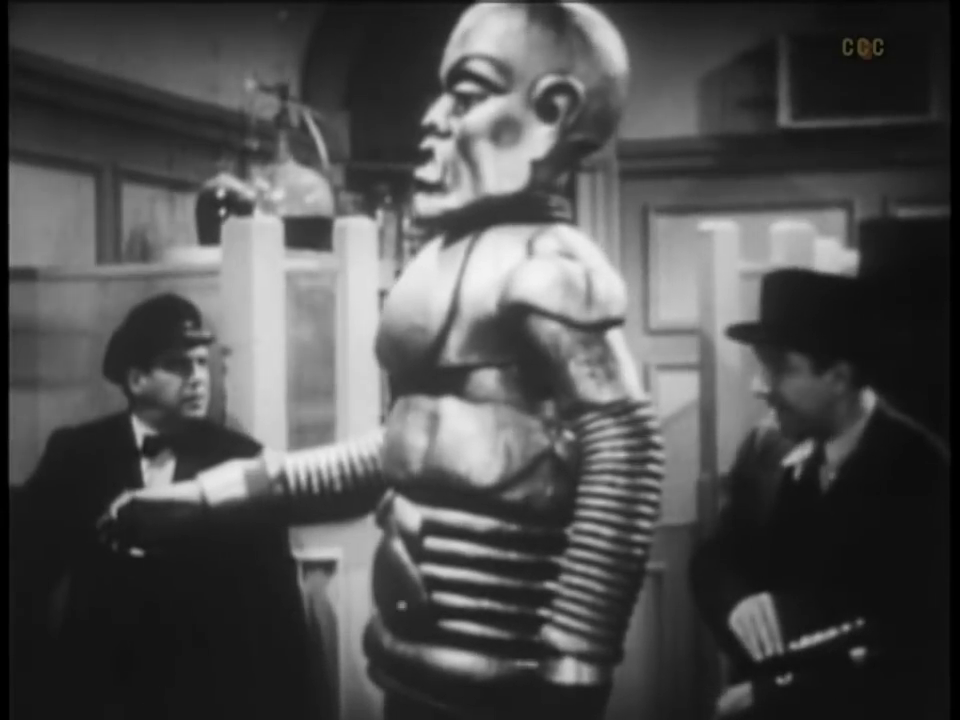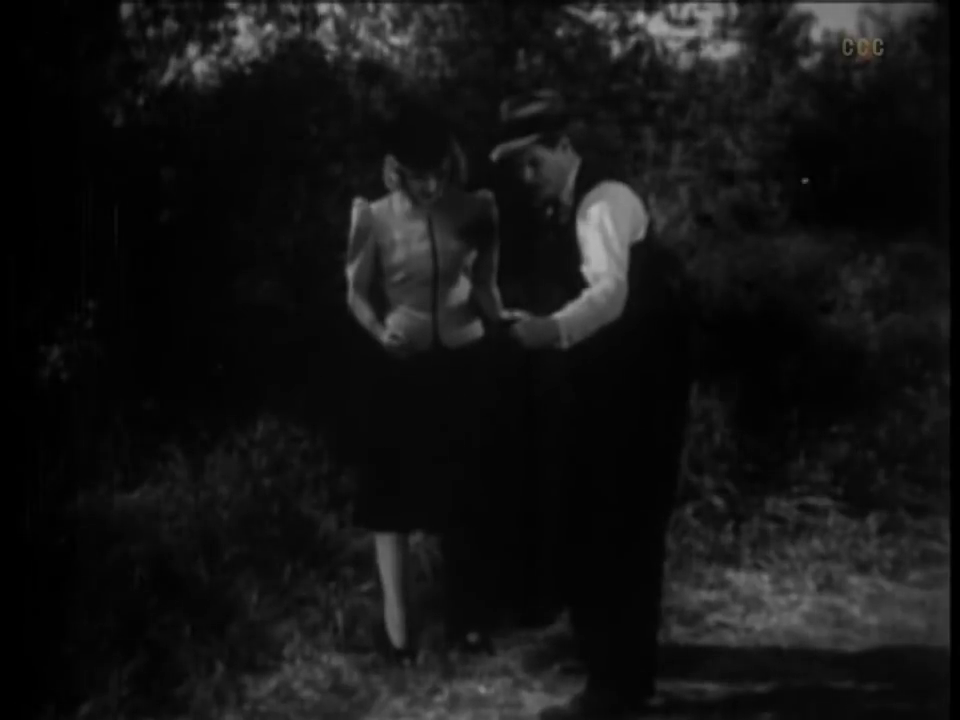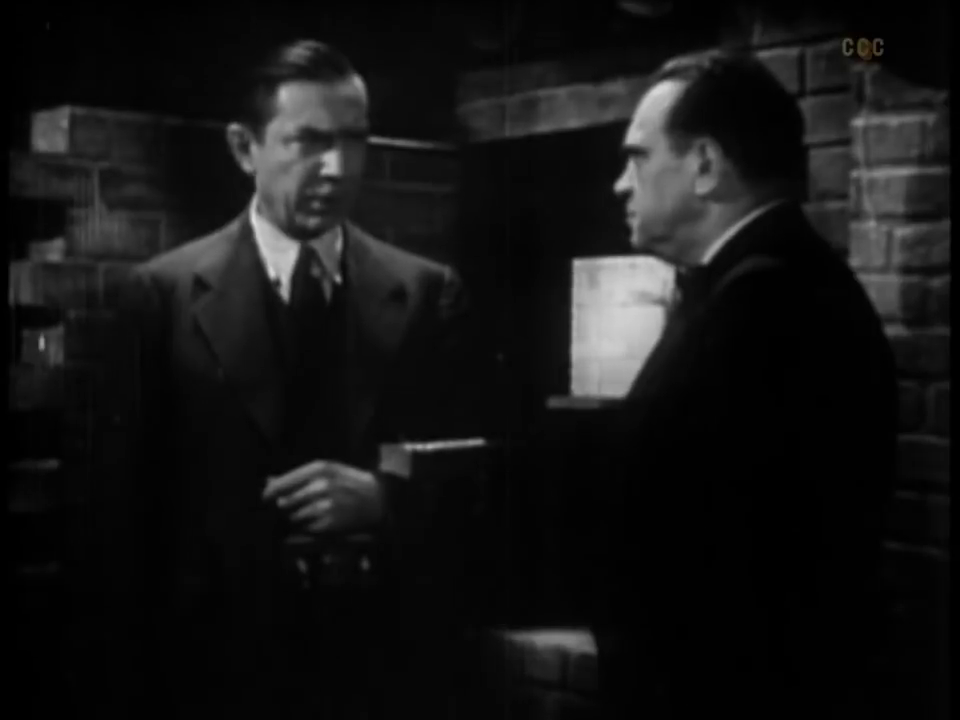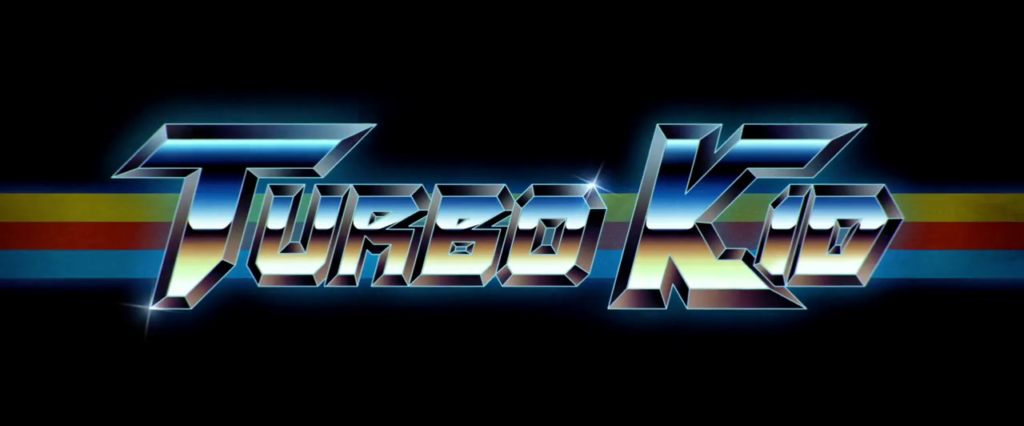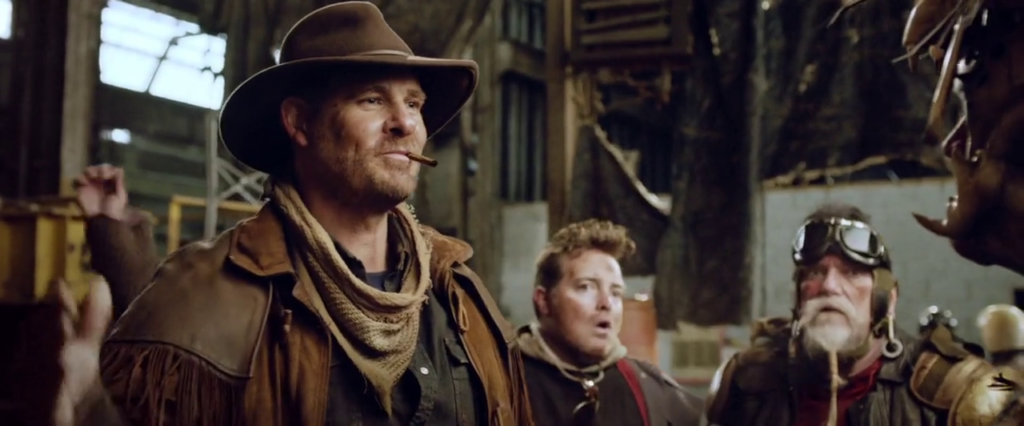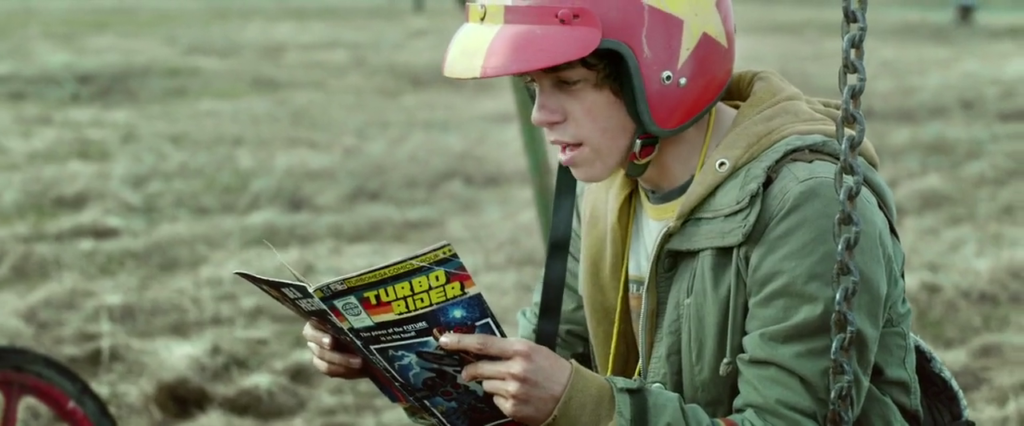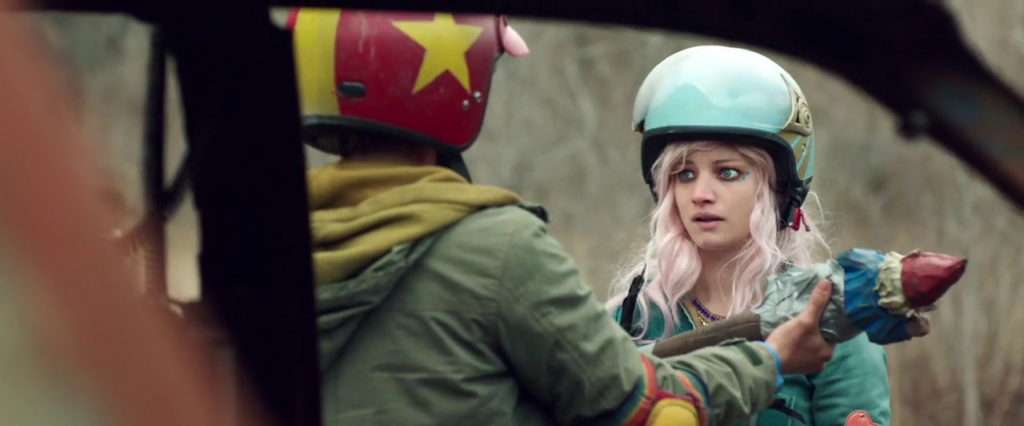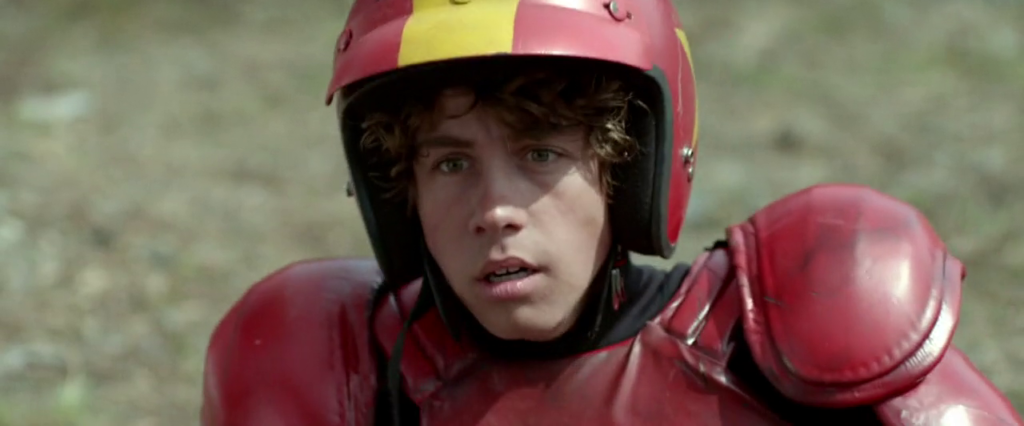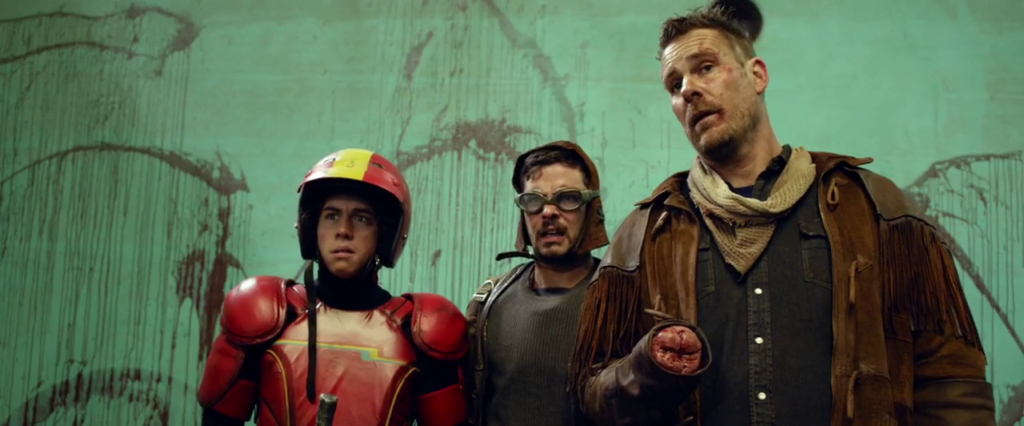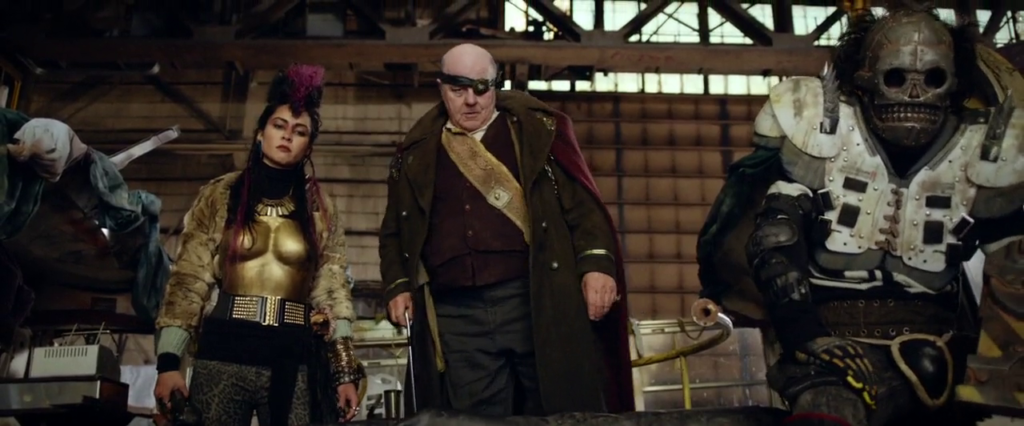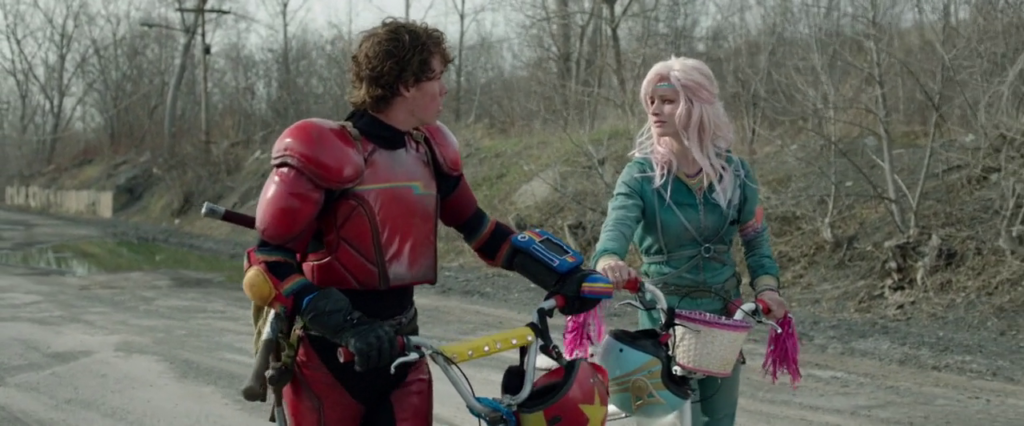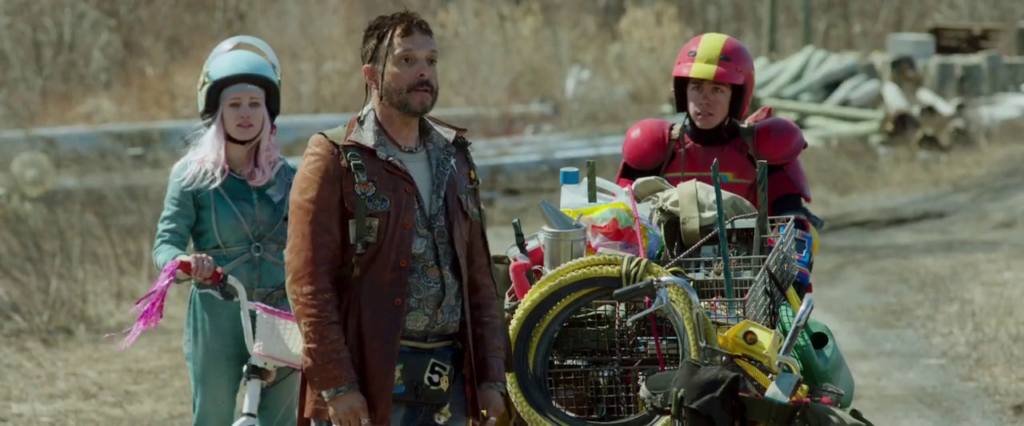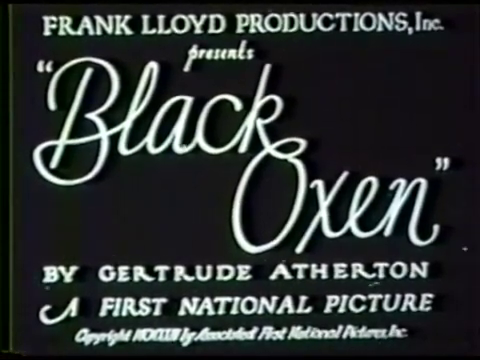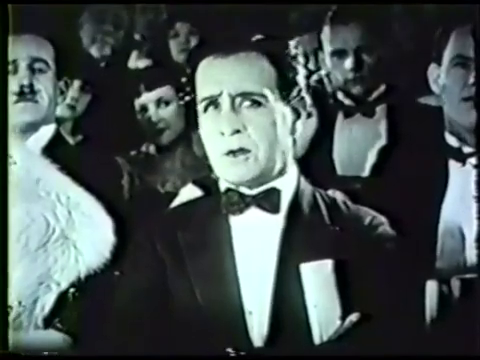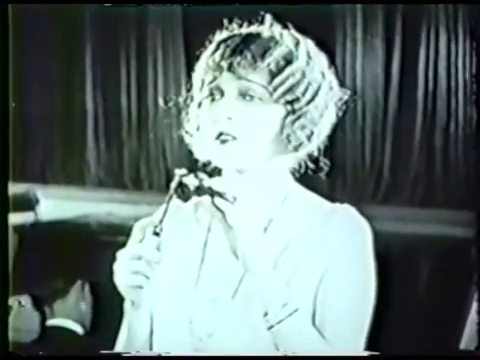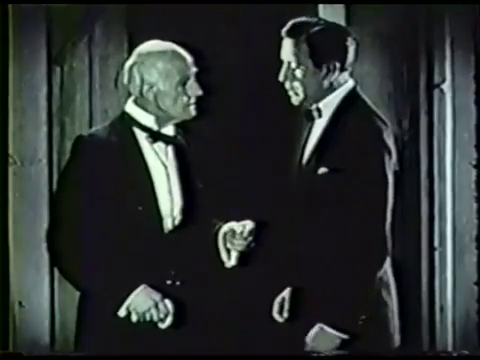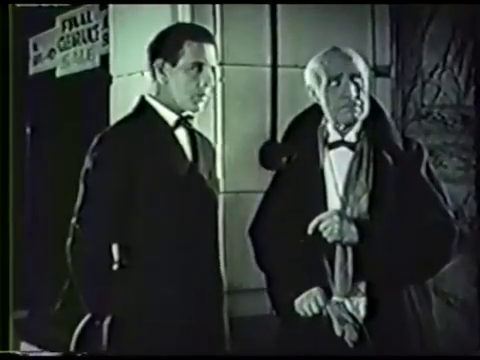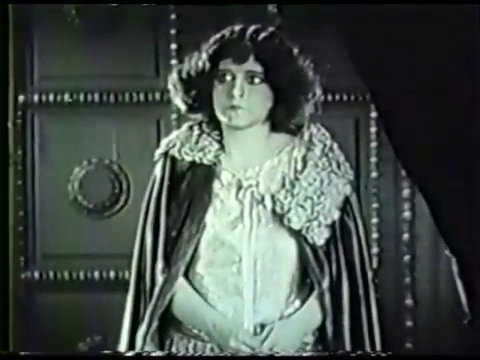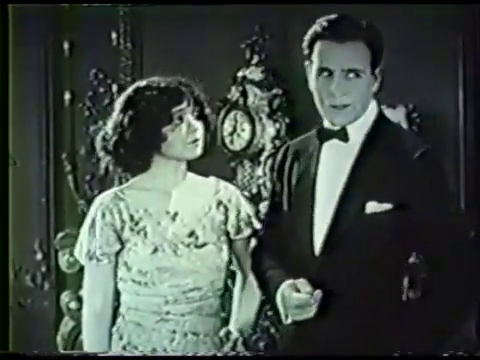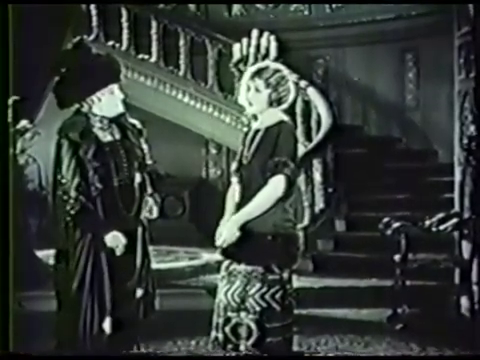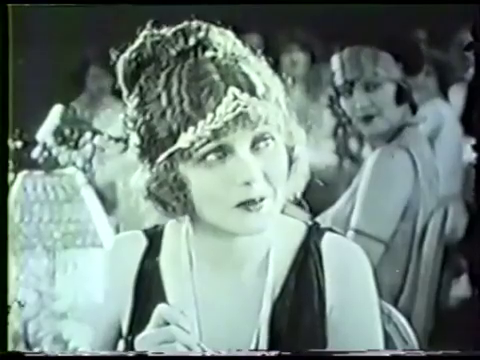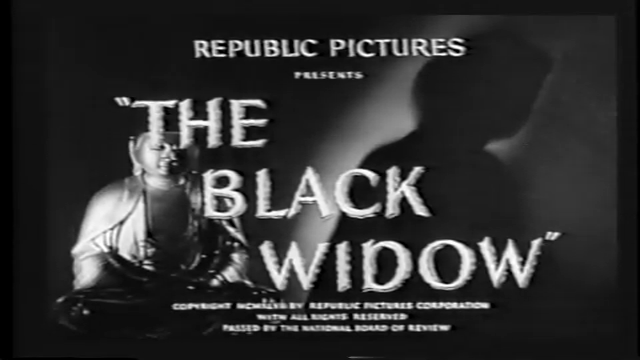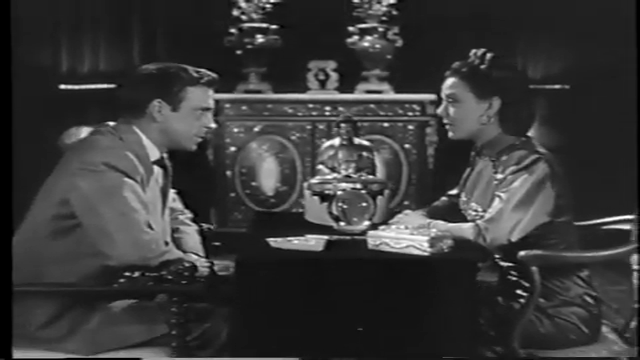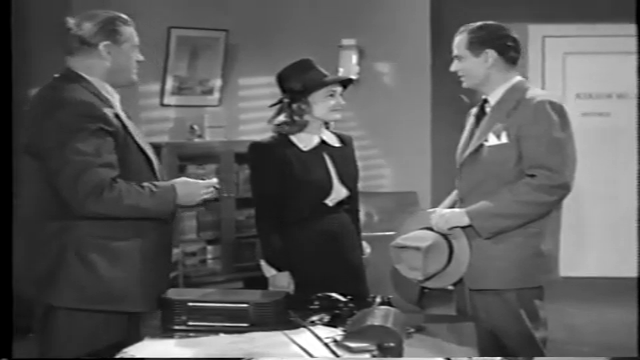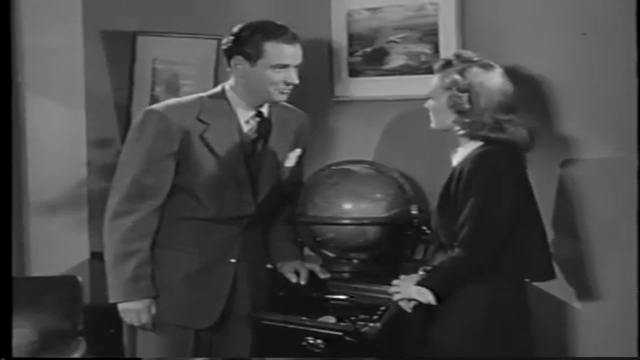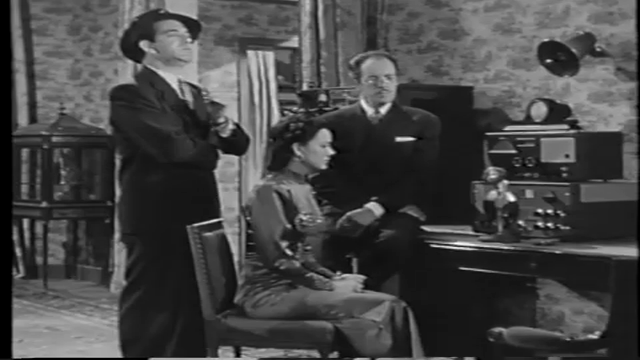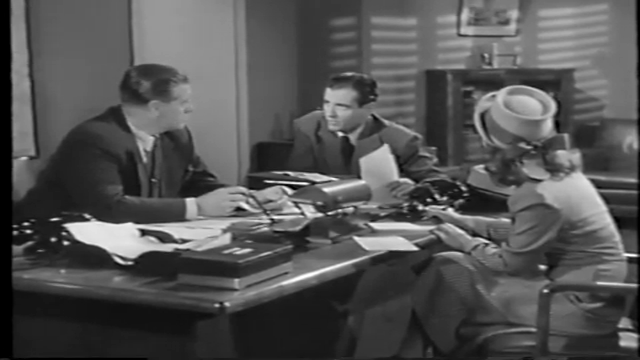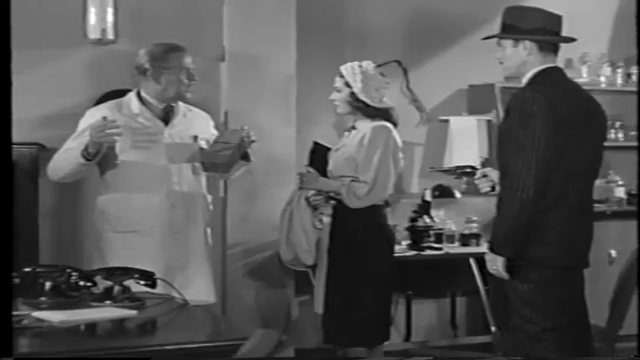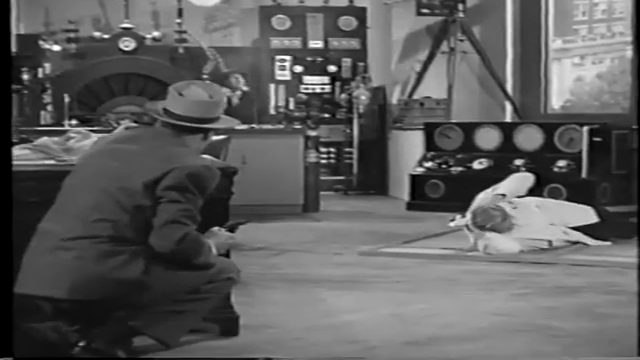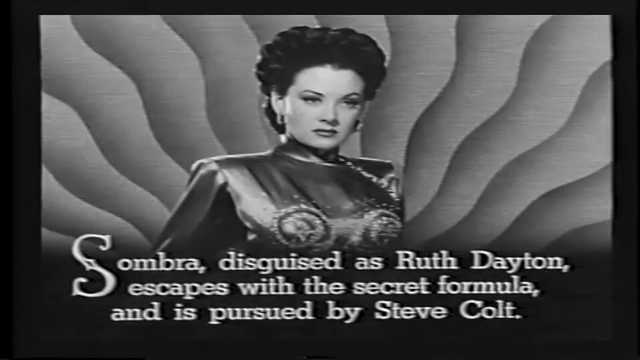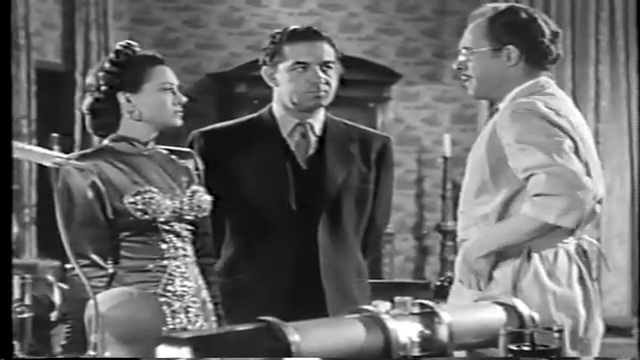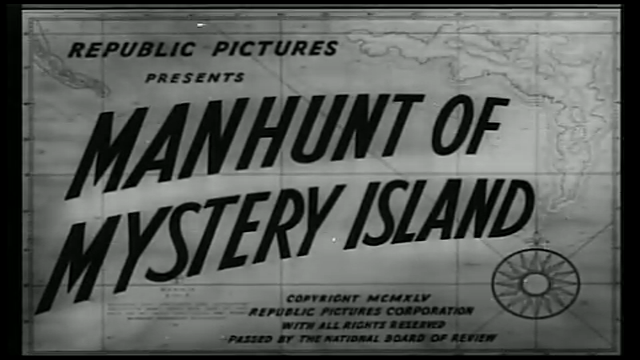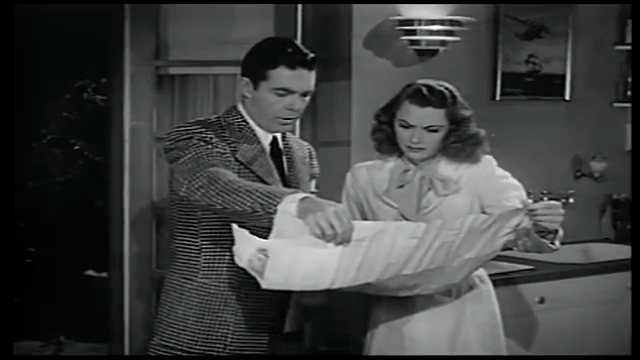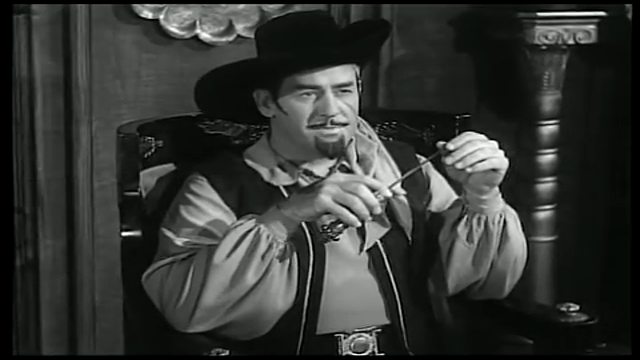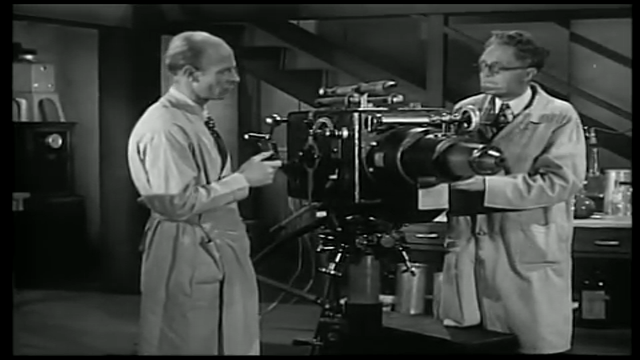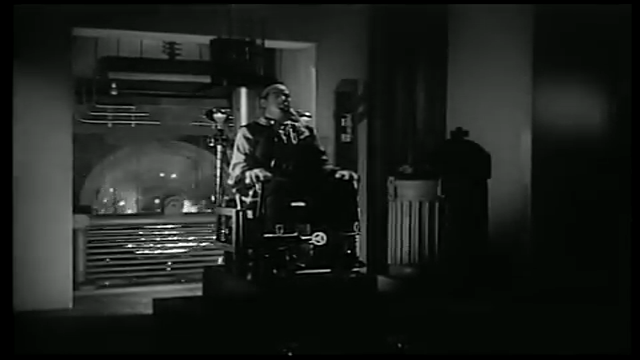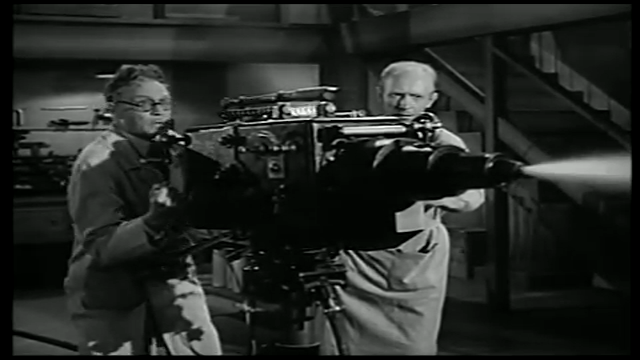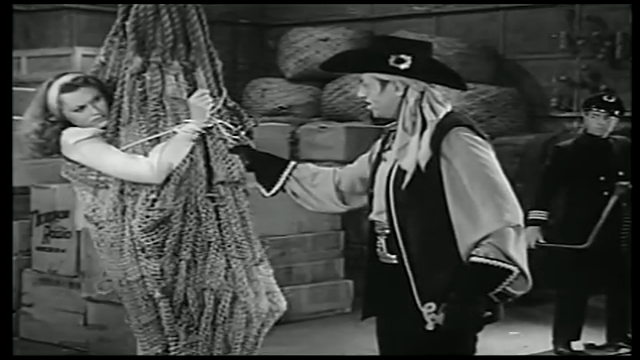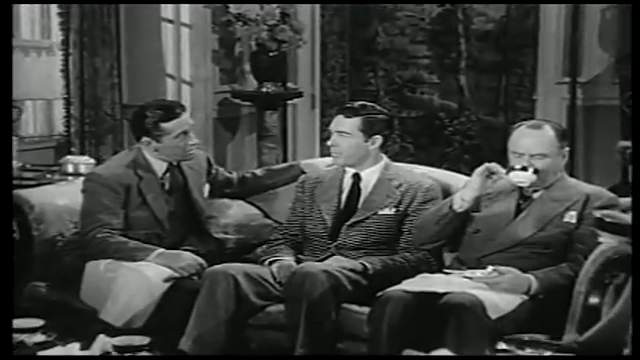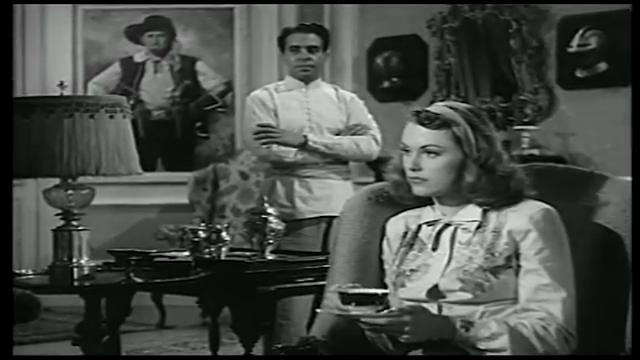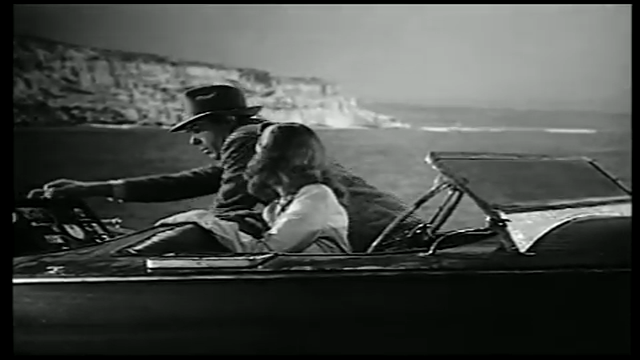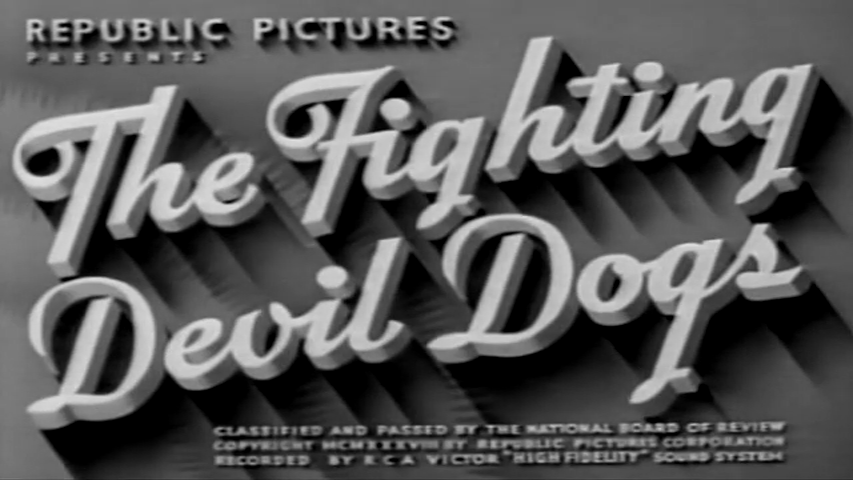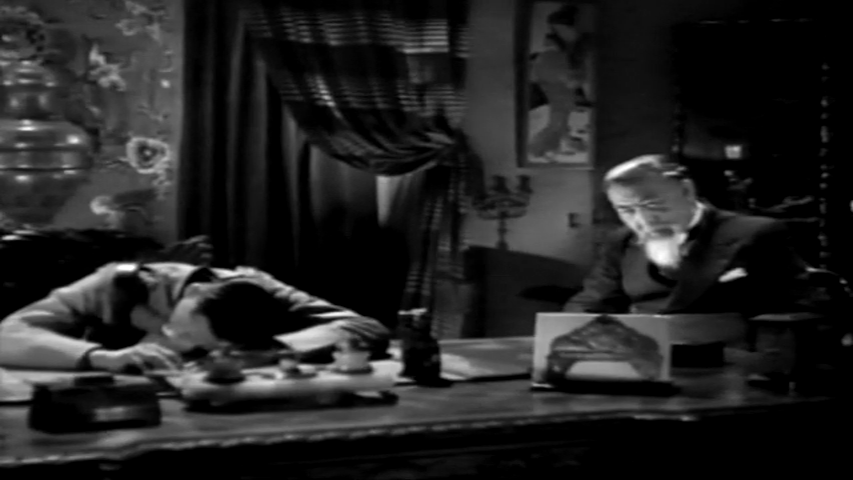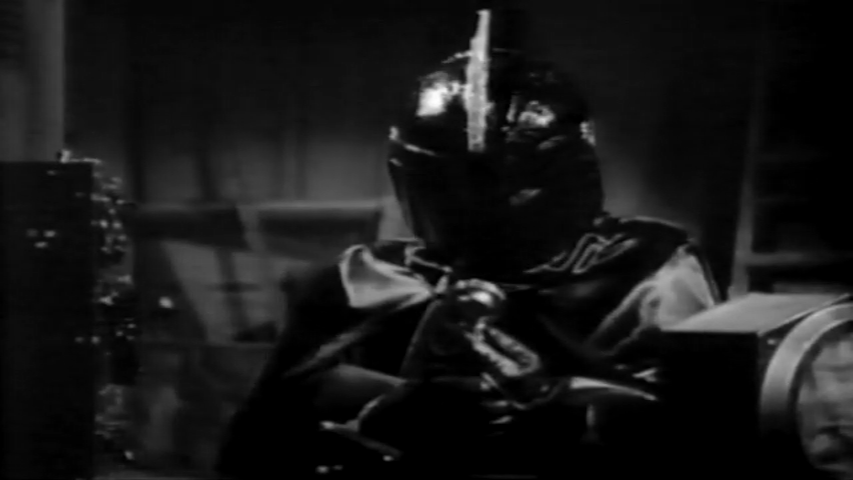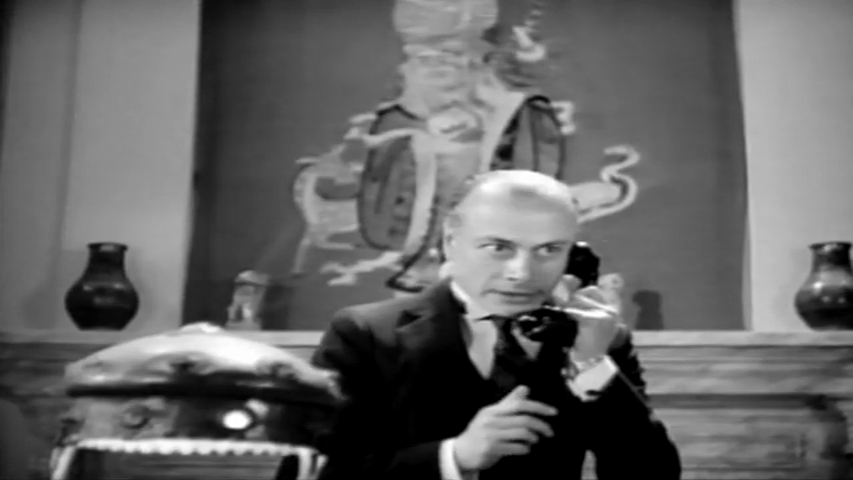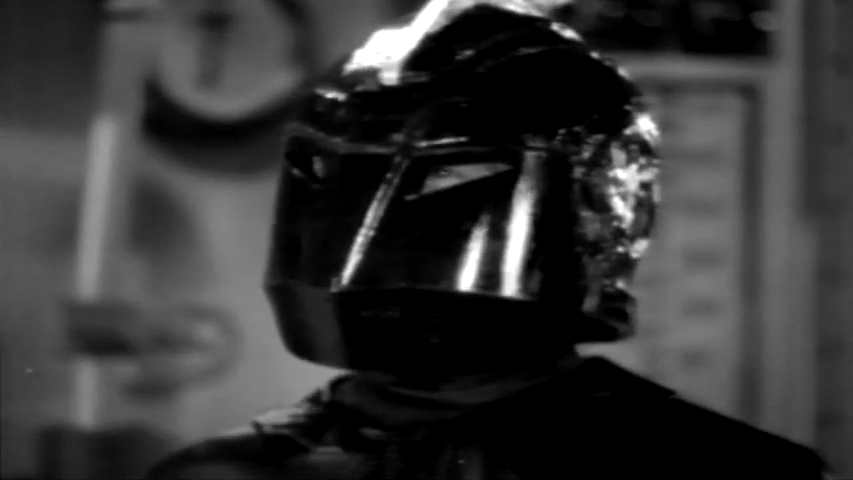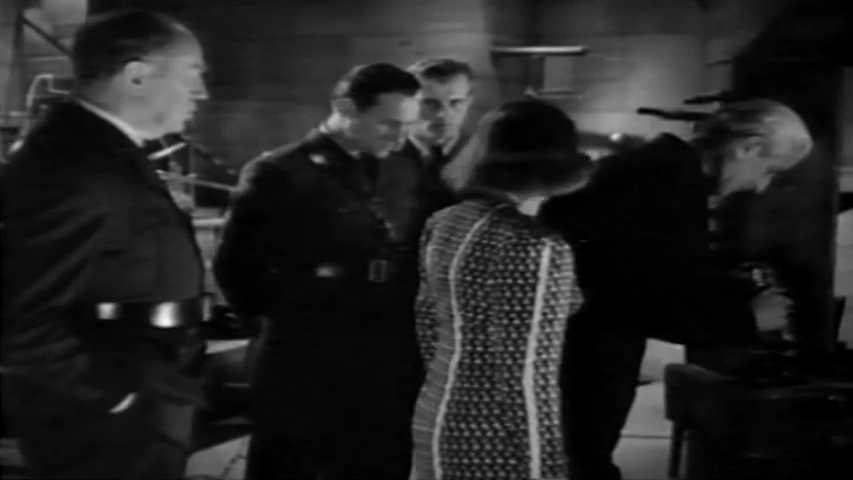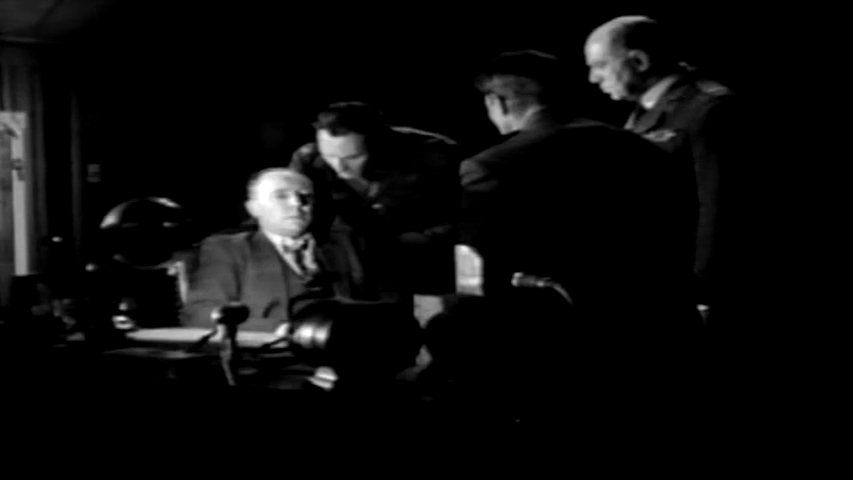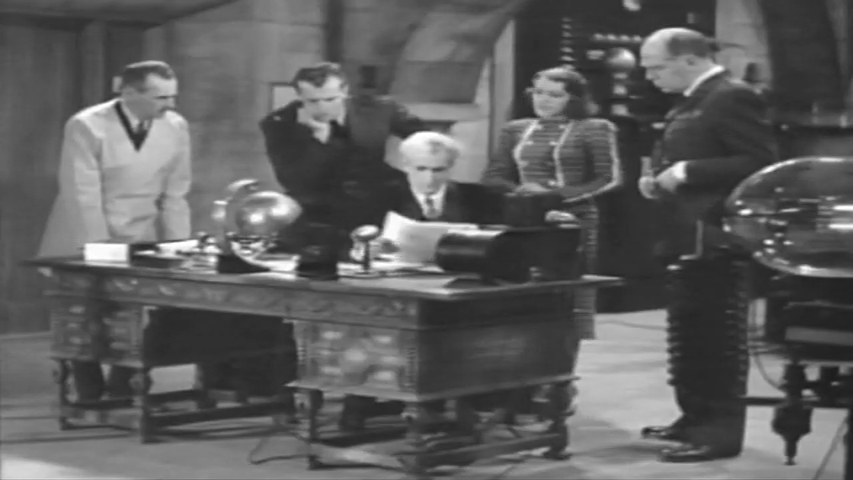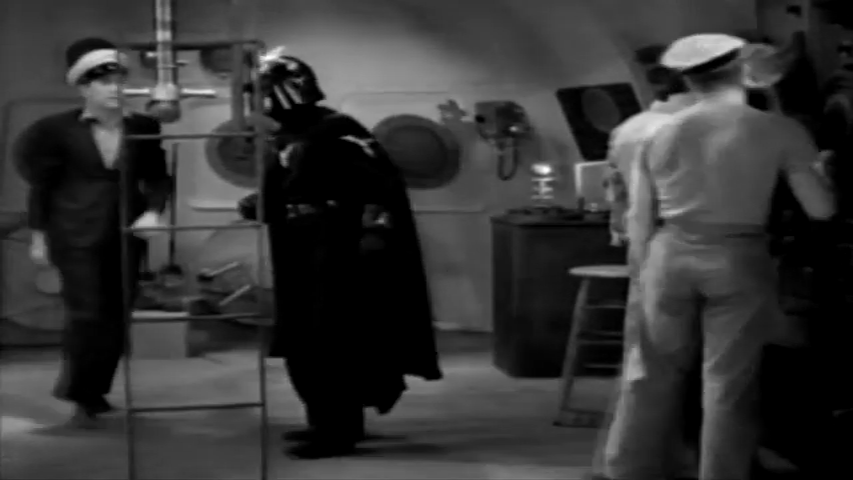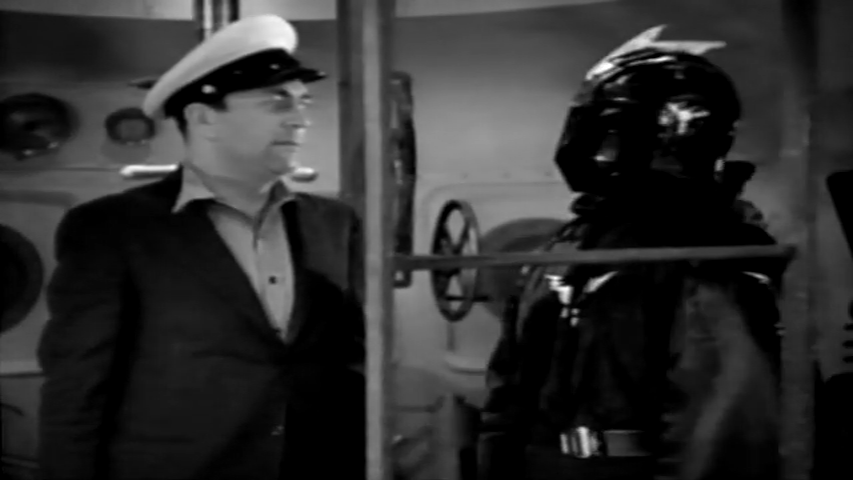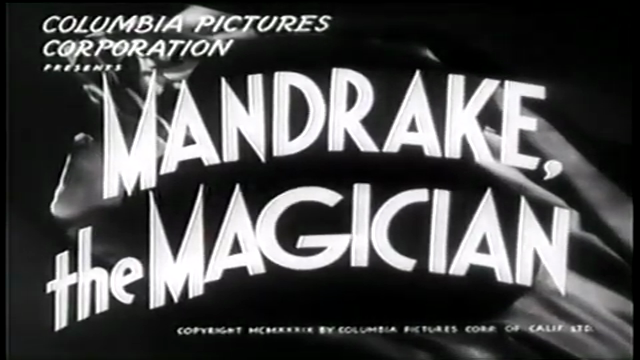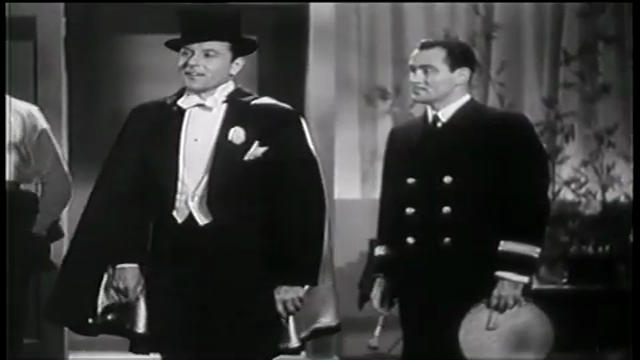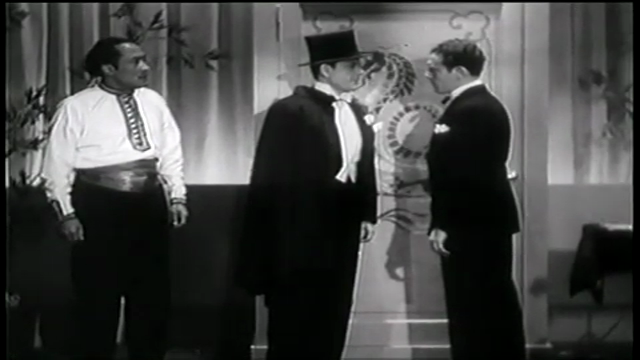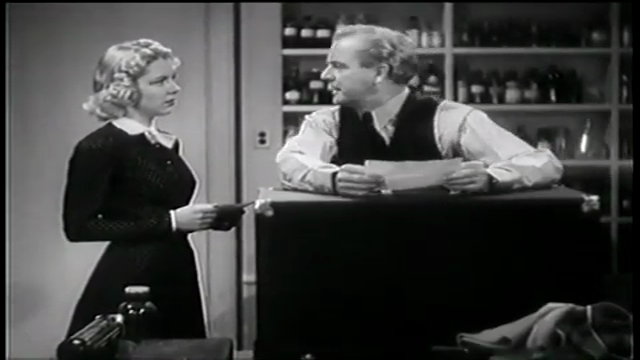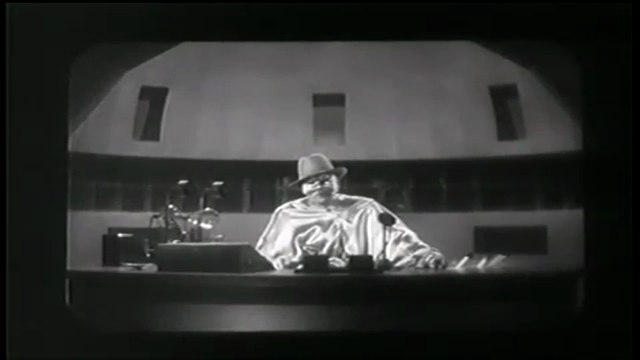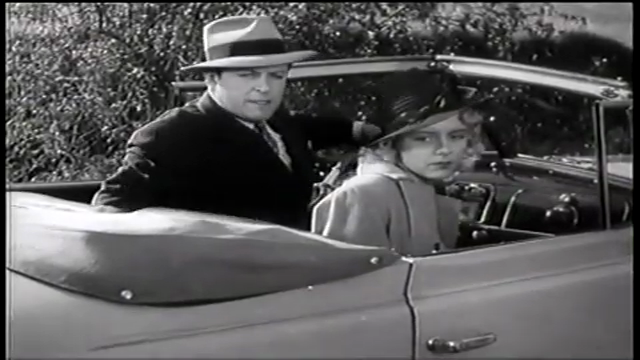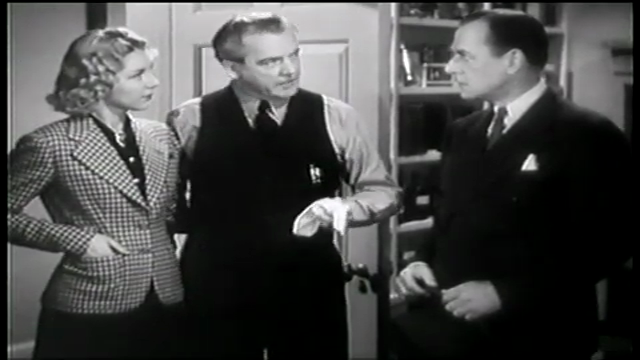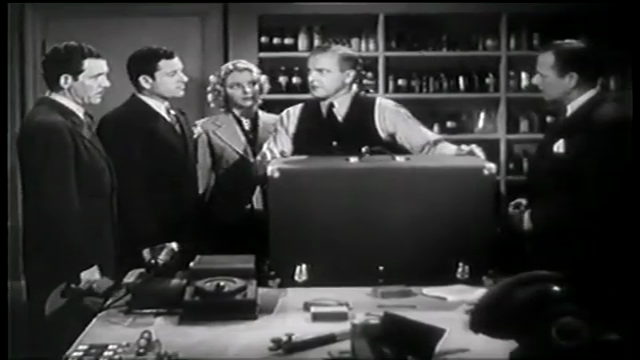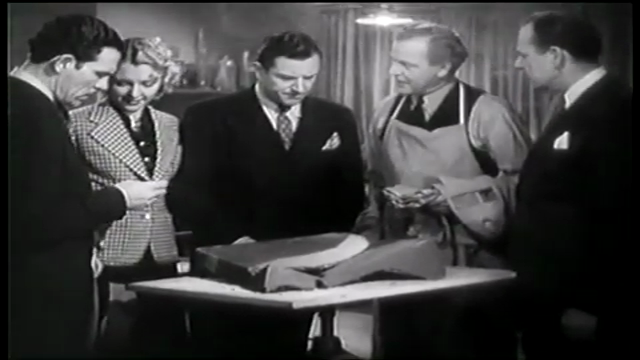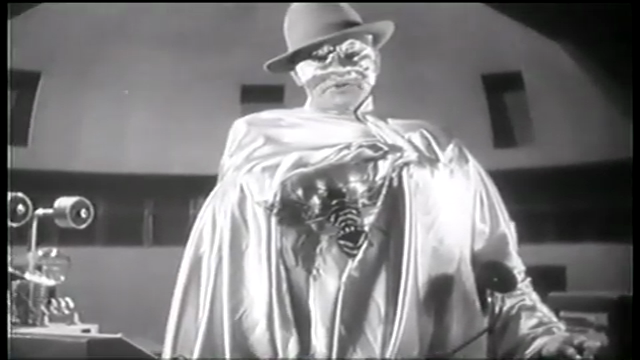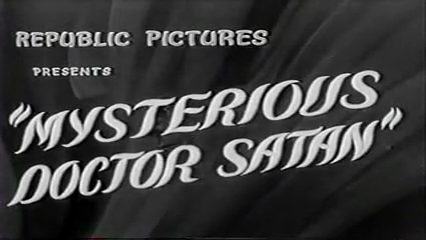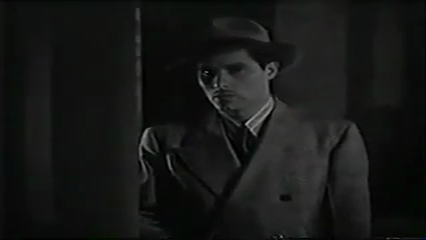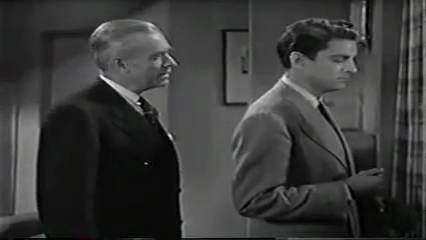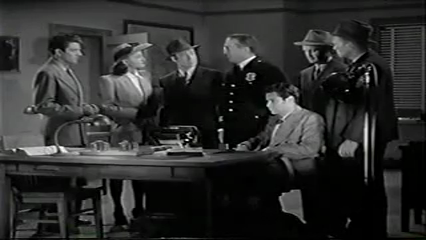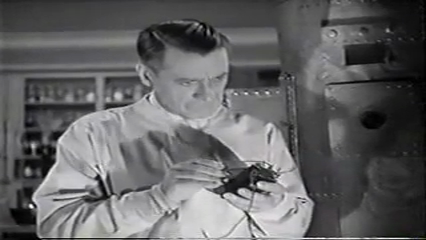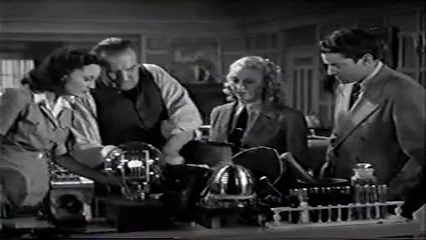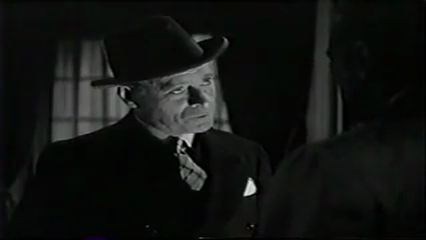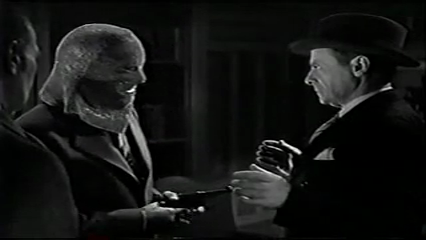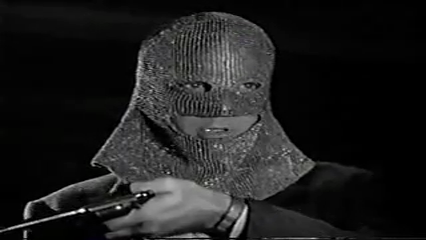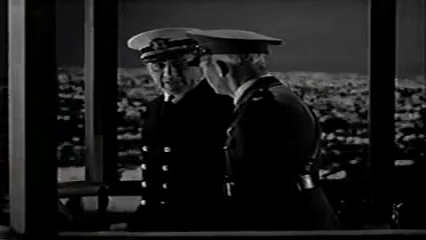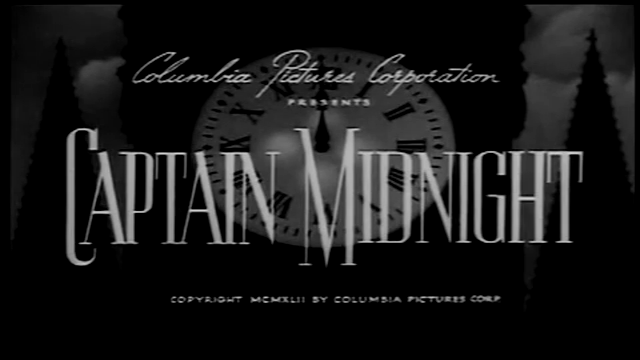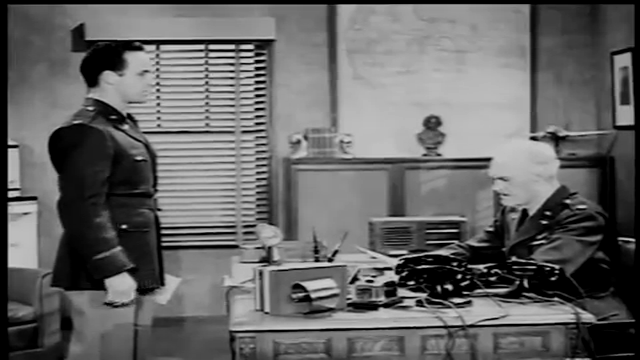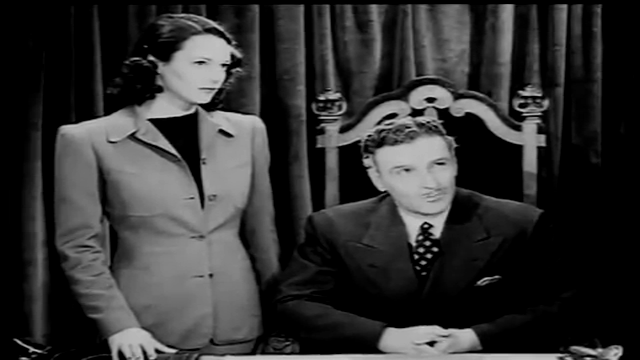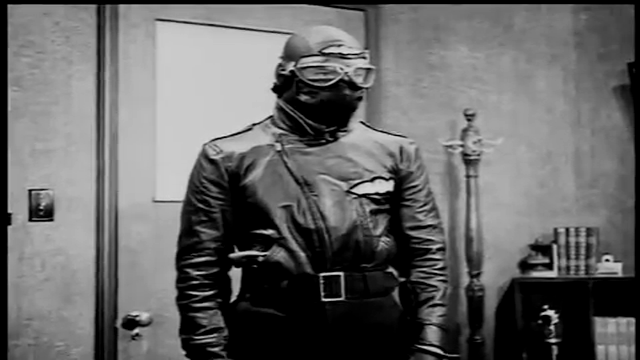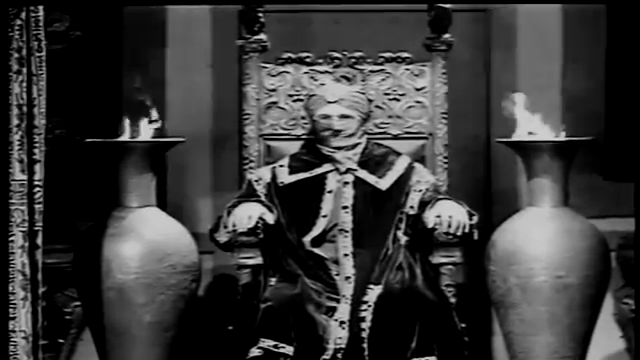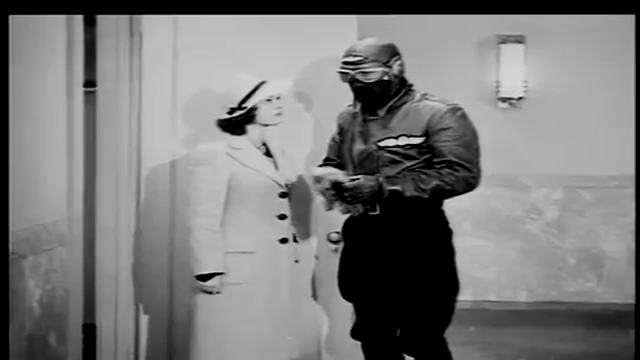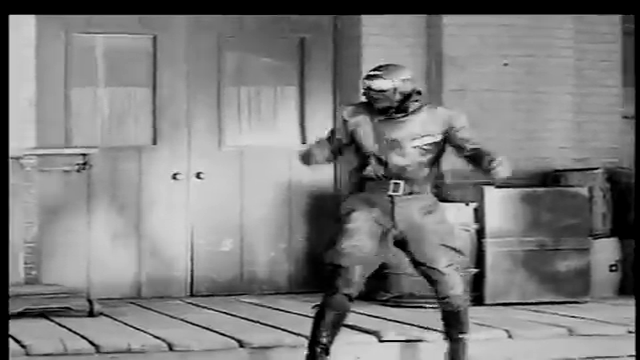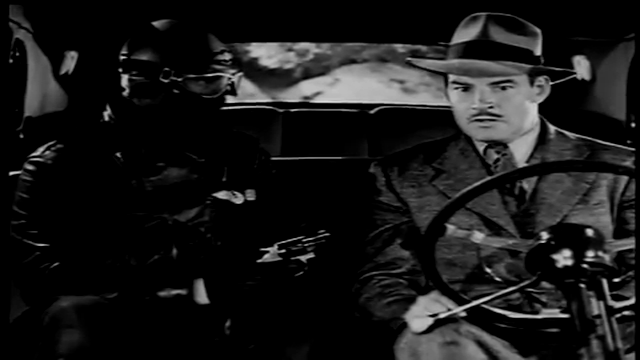-
#457 – My Girlfriend is a Duplicate (2021)
My Girlfriend is a Duplicate (2021)
Film review #457
Directors: Xing Guangjun, Tu Biao
SYNOPSIS: Chen Fei often wakes up after having a dream where her boyfriend Ma Jia tries to choke her. Ma dismisses it, but when Chen gets suspicious about Ma’s work, she discovers a secret laboratory under their home, within which a number of clones of her are being stored. It turns out that she herself is one of these clones of Ma’s girlfriend that he accidentally killed, and that the cloning technology is being sought by a nefarious organisation…
THOUGHTS/ANALYSIS: My Girlfriend is a Duplicate is a 2021 Chinese romance sci-fi film. It is based on the novel “Dragon Fleet” by Tu Biao, who also co-directs this film. The film centres around the young couple Ma Jia and his girlfriend Chen Fei. She is beset by bad dreams about being choked by her boyfriend, which he dismisses as just stress. Ma himself is heavily distracted by his research, which brings in no money for them, and is an added source of stress. When Chen gets curious about the basement of their house, which Ma maintains is just full of junk. When Chen eventually makes her way down there to investigate, she makes a startling discovery: a large number of clones of herself in suspended animation. She eventually learns from one of the other clones that they are all – herself included – clones of the original Chen Fei, who was Ma’s girlfriend before he accidentally killed her. However, he was able to “print” clones of her thanks to the research he has been doing that builds upon his Father’s own research; part of a secret government project to enhance the health of its citizens. The story has a fair amount of different elements in it from romance and science-fiction, so the story has some variety in it. The science-fiction aspect is the most interesting aspect of it, as we learn about the couple’s past. The romance aspect isn’t developed very much, and plays out with beginning as a typical young couple, and never really exploring how this discovery would affect their relationship. When Chen makes the discovery, the film shifts almost entirely to the science-fiction genre, with a lot of the story told through flashbacks. At just over an hour long, we don’t see anything more than these series of flashbacks and a brief follow-up focusing on the consequences of it.
The cast of the film is minimal, with the couple being the main point of focus for relationship drama, and a villain who emerges near the end. There’s some dialogue involving another clone of Chen, referred to as No. 126, and the ‘current’ clone of Chen, but it seems to set her up as her own unique character and then never go anywhere with it. I’m not sure if you’re supposed to empathise with Ma, given that he did kill his girlfriend, and has to continue re-cloning her as the clones have a fairly short lifespan. The ethics of the whole process seems very much unexplored, which seems odd for a science-fiction film, but less odd when you consider which country it is produced in.
In terms of production, the film isn’t up to the standard of big budget Hollywood films: the editing is awkward, and things often move around between shots, which disrupts the continuity. There’s also the rather unconvincing special effects and the wooden acting that doesn’t convey the powerful feelings that this couple are supposedly supposed to have for each other. The most interesting aspect of this film, as with most films produced in country’s with strict censorship programs, is how the film has to do and show certain things to be approved for release. At the start, we are told about a secret government bureau made to improve the health and wellbeing of the Chinese people, but it is done in such a way that it doesn’t make the government look bad or keeping dark secrets from the public. As such, any more details about how secret the bureau is and what it actually did is not addressed. The villain is outlined as being a traitor who wants to steal the Bureau’s research in order to sell it to China’s age-old enemy Japan. There’s also a scene where the villain goes to pray at an altar with what I presume is meant to be the Chinese Premier, to which Ma calls him out to “stop pretending” that he is paying his respects. This again is obviously reinforce the message that the villain is not part of the government and is this traitor that deserves no sympathy. As mentioned earlier, sci-fi films such as this would usually address the ethics of the concept of cloning, and whether it is right to do it. This film completely avoids saying whether it is right or wrong: the only wrong it highlights is selling the secrets to a foreign enemy. It is perhaps important to highlight that the Chinese government is often found at the forefront of cloning research, and any kind of critique could easily be seen as a critique of government research. The trouble is that such explorations of ethics and possibilities of science and technology really is at the core of the science-fiction genre, and in completely avoiding that part of it, this film feels quite pointless and empty.
-
#456 – The Phantom Creeps (1939)
The Phantom Creeps (1939)
Film review #456
Directors: Ford Beebe, Saul A. Goodkind
SYNOPSIS: An evil scientist named Dr. Zarko has developed inventions that he intends to use to take over the world. With the government and foreign spies constantly trying to get him to get a hold of his inventions, Zarko is uninterested until his wife his killed, when Zarko swears vengeance against the world. Faking his own death, he adopts a new disguise and sets to work. Bob West, a government agent, works together with Dr. Frank Mallory, Zarko’s once-assistant, and journalist Jean Drew to try to foil Zarko’s various attacks and the spies who want his work, while beginning to suspect Zarko is not dead after all…
THOUGHTS/ANALYSIS: The Phantom Creep is a 1939 film serial composed of twelve chapters. Most notable for featuring film icon Bela Lugosi as the villain, it would also be the last movie serial he would star in. The serial starts off introducing Lugosi’s character Dr. Alex Zarko, a brilliant scientist but a bit eccentric as he likes to play tricks on the government agents and foreign spies that are attempting to buy or steal his inventions. He takes everything in good stride until his wife is killed, and the thought of vengeance on the world completely consumes him, and begins using his inventions for evil after faking his own death. Government agent Bob West teams up with Dr. Frank Mallory, who was Zarko’s assistant who wanted him to donate his inventions to the government for the benefit of mankind, and left when he refused. Also working with Jean Drew, a journalist at a national newspaper. Together, they take on the spies that are attempting to get a hold of Zarko’s inventions, and investigate whether Zarko is really dead. One thing that stands out in this serial is all the various inventions that Zarko uses. He has invisibility, an eight-foot robot, robotic spiders that can paralyze people and also a device to put people into suspended animation. Normally, only one of these inventions would serve as the main plot point for a serial, but this serial gives us all of them. While all of these inventions have been the focus of other serials, having them all together like this gives some much needed variety, as different chapters focus on different things, and are used fairly creatively in the various schemes and set-ups. The plot has a lot of back-and-forth with the characters ending up at Zarko’s old home many times, only to be continually come under attack and being surprised when they do so. The story goes round in circles and lacks some direction with so many different things happening, but it’s better than nothing happening, which is what many serials do when they try to stretch very little over twelve to fifteen chapters.
In terms of characters, they are nothing special: there’s all the usual characters from the young action-hero, the sole female etc., but the star of the serial is obviously Bela Lugosi, who gets first billing, and is always the star of every film he is in. His performance is similar to his usual roles (he is the villain in a few serials), but he undoubtedly draws in the audience for those very roles. He also has an assistant called Monk, who plays the role of the idiotic assistant who bungles and sometimes intentionally sabotages Zorka’s plans provides some comedic value, but is mostly there to give Zorka someone to interact with and get his wrath out on.
With all of the inventions and devices that form the backbone of the action, the effects are fairly well pulled off. Of course, the mechanical spiders and the floating objects being carried by an invisible Zorka aren’t convincing nowadays, but there’s definitely worse I’ve seen in the serials of this time. One thing of interest is that there’s not many fistfights or gun shoot-outs, which is usually what most of the action in serials consist of. This serial has all of the inventions to replace that, but also focuses a little more on setting up large scale explosions or vehicle crashes that form the chapter’s cliffhangers. The chapters are also fairly longer than usual, going to about twenty minutes whereas some serials only have fifteen minute chapters with a lot of reused footage from a previous chapter. As such, I think you would get your value for money going to watch this at the theatre in comparison to others. Overall, The Phantom Creeps has a fair amount to offer viewers with its imaginative inventions, and Lugosi’s star quality. The story lacks direction sometimes and the other characters fall flat due to some dull acting and lack of anything unique about them, but overall the serial has enough to make it an above average venture.
-
#455 – Turbo Kid (2015)
Turbo Kid (2015)
Film review #455
Directors: François Simard, Yoann-Karl Whissell, Anouk Whissell
SYNOPSIS: In the post-apocalyptic world of 1997, a boy known only as Kid, who idolises the “Turbo Rider” comic book character, stumbles upon a girl named Apple, who starts following him around everywhere. When the local warlord Zeus starts pressing his terror across the wasteland, Kid discovers the remains of the real Turbo Rider, and along with them, the superhero powers he needs to take on Zeus himself…
THOUGHTS/ANALYSIS: Turbo Kid is a 2015 post-apocalypse sci-fi film, it is an expanded version of the six-minute short film T is for Turbo from 2006. The film is very much an 80’s retro-styled post-apocalypse film that were produced in overwhelming numbers throughout the decade (mostly inspired by the success of Mad Max). The film starts off introducing Kid, a teenage boy who lives in this wasteland by scavenging, and who idolises the comic book character “Turbo Rider.” One day he stumbles upon a bizarre young woman named Apple, who starts following him around everywhere. The pair get caught up in a fight with the local warlord Zeus. The story of the film is fairly straightforward and easy to follow, and while the stakes never seem to be too high, the focus is on the characters and their relations to each other, rather than saving the world. It definitely has that Mad Max feel in terms of the story, with minimal worldbuilding or lore into how everything was destroyed and how people survive in this world, which is more or less in keeping with the genre, which usually gives off an “end of history” vibe in that after the world is destroyed, the question of “why?” doesn’t have much meaning, particularly in comparison to the question of survival.
Kid stumbles upon the remains of the real “Turbo Rider,” and takes his superhero suit and laser blaster thing to become him, and this gives him the power to take on the villains. This also feels very much like another classic 80’s trope: the revenge flick, in which a wimpy teenage kid suddenly gets the power to take revenge on everyone that wronged them. The obscure film Laserblast (though released in 1978) is one that particularly stands out to me. This is also a very sudden realisation that Turbo Rider isn’t just a comic book character, but is apparently a real person in this universe, which is not hinted at all before this reveal. Perhaps it is a sign that a destroyed world has no need to remember superheroes. When Kid puts on the suit, he takes up the mantle of the superhero in this strange new world, and as his connection to other characters and his past is revealed. The cast of characters on the whole have their own personalities and roles, and while none of their characters are particularly noteworthy or unique, you get a sense of the entirety of their character, given that in a post-apocalyptic world, most people don’t have multi-layered personalities and interests, and instead rely on their base instincts to survive.
The 80’s aesthetic extends to the soundtrack, which is very synth-driven, and while the budget is fairly low for the film, the cheaper CGI also feels more suitable to its aesthetic. The majority of the film relies on practical effects, particularly in relation to the use of gore; and there is a lot of gore. This is also very much in keeping with the exploitation and revenge films of the time where those who have wronged our hero often end up being disembowelled or mutilated in some way. There’s a nice contrast between the colourful superhero element of the film and the excessive gore that again reflects an age of cinema when age ratings were all over the place. The practical effects of the gore lead to some pretty fun and absurd situations, particularly when the body parts land on someone’s head and a totem pole of severed torsos start piling up. It’s this sort of thing that makes the film quite creative. Turbo Kid is overall quite minimal in it’s story and world setting, but excels in some ridiculous and over-the-top special effects that create some visceral gore which equally nasty and funny. While there are many films that set themselves up as a love letter to the 80’s, Turbo Kid also follows that trend while not feeling like its not afraid to push itself further, and allowing itself not to be constrained by the usual tropes associated with it. The low budget I think hampers the ability to do something more grand and spectacular with the whole superhero element, but it’s a fairly decent film that has you connecting to the characters and immersing you in familiar tropes that are comfortable and recognisable, but still able to throw in a few surprises.
-
#453 – Black Oxen (1923)
Black Oxen (1923)
Film review #453
Director: Frank Lloyd
SYNOPSIS: In New York high society, the appearance of a young woman named Mary Ogden who is the spitting image of a woman who has not been seen for thirty years after she left to marry in Austria. Her appearance causes a stir with the older members of high society, as they wonder how this woman can look exactly the same as a woman from thirty years ago. Lee Clavering, a member of the society, starts to take notice of her, which draws the scorn of Janet Oglethorpe, who desires Lee for herself. However, Mary has a dark secret that may drive Lee away forever…
THOUGHTS/ANALYSIS: Black Oxen is a 1923 silent film based on the book of the same name by Gertrude Atherton. The film is set in New York’s high society, where the most prominent members of society mingle in the theatres and the like. One night they notice a new lady, Madame Zittany, who is the exact image of Mary Ogden, who left to marry a count in Austria some thirty years ago. Her appearance causes quite a stir, with some believing her to be an illegitimate child of Mary’s. Lee Clavering, a member of this high society, starts to spend time with her and falls in love with her. The film is very much a romance film, but the mystery of Countess Zittlany provides an interesting twist to a typical story. It is very rare to see romance films blend with a more bizarre mystery, so it definitely stands out. The plot moves along at an even pace, probably helped by being based on a book. The themes of romance and high society contrasting with the more wild and free youth provides a good support to the mystery of the Countess, who is seen differently between the different generations.
The characters are well-defined and are recognisable by playing specific roles. Lee as the lead is described as being a “secret romantic” inside his disinterested exterior, leading to the women trying to get him to open up. He’s not particularly animated or interesting, but serves as a blank slate for male viewers to project themselves into I suppose. The women are by far the most interesting characters: The mysterious Countess has her mystery, but not much of a personality trait that is recognisable. Jane Oglethorpe is the elderly matriarch of the society, and represent some very traditional values, while Janet Oglethorpe, her granddaughter, represents the youth culture of partying and independence. The young people are referred to as “Flappers,” which isn’t a word you would hear nowadays, but probably still represents a similar divide between generations, which is pretty interesting to see in a film that is nearly a hundred years old. I think Janet particularly steals the show, as her chaotic actions really disrupt the norms of high society and add an element of unpredictability to a society that is mired in tradition and expectations. One particular moment when she refers to her grandmother and her associates as “tombstones” was genuinely funny, as you don’t really expect such an upfront performance in this era.
The science-fiction element of this film is part of the mystery of the Countess, who it turns out is actually Mary Ogden herself, rejuvenated through x-ray experiments and glandular surgery. It isn’t explained anymore than through images of a letter written to Lee confessing all of this to him, but this is a romance film rather than a sci-fi one. As mentioned, the film is based off a book of the same name that was both controversial and very popular. Maybe the idea of a woman altering her looks to look younger than she is was seen as deceptive, or maybe the “flappers” and their disregard for societal norms was frowned upon. Either way it does seem to be something that would have upset certain members of society. Mary’s reasons for undergoing this de-aging treatment aren’t personal, but rather to pretend to be her own daughter (when she in fact had none) to ensure the stability of Austria, as she married a Count there when she disappeared from New York thirty years ago. In pretending to be the descendent of herself and the Count would provide a sense of stability for the country. It’s a long-winded reason, but I think it’s meant to emphasise that she did not do this to simply look younger and re-live her youth, or steal eligible men, which is what her contemporaries seem to think.
The ending of the film is not available, but apparently it ends with Lee eventually marrying Janet instead of Mary, which the film doesn’t really set up from what I have seen. I don’t think the story is meant to “punish” Mary for her deception, but rather validate Janet’s free-spirited approach to life. Maybe that’s why the film is controversial in that it “rewards” Janet’s attacks on tradition with the hero (as far as marriage is the reward anyway). It’s obviously an old-fashioned film with it’s ideals firmly rooted in it’s time, but it’s also not scared to attack those traditions which is quite relatable today, and it shows that the gap between generations is pretty universal. Overall, Black Oxen is a decent silent film, with good acting, set designs, and a tight story that is clear despite it being silent. The performances are particularly strong and convey the specific personalities of all the characters very well. The sci-fi aspect raises some moral and ethical dilemmas, and it’s consequences are explored with enough detail to set the film apart from it’s contemporaries and make it quite memorable.
-
#449 – The Black Widow (1947)
The Black Widow (1947)
Film review #449
Directors: Spencer Gordon Bennet, Fred C. Brannon
SYNOPSIS: A series of murders involving poison from a venomous spider leads the editor of the Daily Clarion newspaper to hire amateur criminologist Steve Colt to investigate. He is joined by Joyce Winters to investigate the work of the criminal known only as the “black widow,” who is attempting to steal a prototype rocket project for undoubtedly evil ends…
THOUGHTS/ANALYSIS: The Black Widow is a 1947 serial comprised of thirteen chapters. In the opening, we see a man fall victim to a venomous spider bite, orchestrated by Sombra, a foreign agent disguised as a fortune teller. Adding this man to her killing spree, the Daily Clarion newspaper aims to uncover the secrets of this killing spree by hiring amateur criminologist Steve Colt to unravel the mystery. The story is a very familiar setup, with the basic premise being the protagonist’s having to foil the antagonist’s schemes through car chases, fistfights and the like. It all feels very familiar, and the plot never really progresses beyond this back and forth. A major part of the plot revolves around Sombra trying to get a hold of a prototype rocket project, but it doesn’t really go anywhere or add anything to the story. While almost all of the serials follow the same format and low budget production, the best ones are able to provide something that is reasonably unique to help drive the story and set itself apart from other serials, but The Black Widow doesn’t really have anything; no, an unconvincing plastic spider coming out of a chair to poison it’s victims once or twice doesn’t count.
The characters don’t really help give the serial an original edge. Steve Colt as an “amateur criminologist” is a role that a lot of the serial leads have. It’s a wonder how so many “amateur” criminologists are able to bring down crime bosses with little to no help from the police. Joyce Winters provides the “lead” female role, which is to say she has a small part to play in the serial other than being kidnapped (although she does that too), and it’s good to see more than one female character playing a role in the serial. Sombra as the villain is cold and ruthless, but spends a lot of time just giving orders. Her ability to put on masks and disguise herself as other people seems to be otherworldly, but lacks explanation and justification. Carol Forman, the actress who played Sombra, often played the role of female serial villain, and played a similar character in the 1948 Superman serial, where she played the criminal mastermind the “Spider Lady.” The rest of the character don’t make much of an impact on viewers, and are quickly forgettable. Sombra’s Father, King Hitomu, appears through the use of a device that apparently transports him across the world from presumably east Asia somewhere (although the characters are white they are obviously made up to “look” Japanese, as a lot of serial villains were in response to their role against the U.S. in WWII). Having a transportation device that can take you across half the world instantaneously should probably be more of a deal than the serial makes it out, using it so Hitomu can appear, give his orders, and then disappear again. The plot of the experimental rocket weapon just seems to pale in comparison to such a device. His motivation also just seems to be limited to “conquering the world,” which doesn’t really say anything about his character.
Released in 1947, the serial was released after the peak of the format’s popularity, and the continually recycled tropes had mostly run their course as Hollywood was turning away from low budget serials to feature films that could be more experimental and bold in the post-war boom. That said, with directors Spencer Gordon Bennet and Fred C. Brannon attached; two of the veteran serial directors, the action scenes and camerawork are decently co-ordinated. The acting is often pretty rough, and the dialogue unnatural, as these serial s often try and recap past events through dialogue for people that have missed chapters. There’s some inventive setups and scenery, with hidden switches, and imaginative devices that the villains use to implement their schemes. Overall, The Black Widow benefits from the experience of it’s production staff, but fails to come up with an original story or interesting characters to justify going through all thirteen chapters.
-
#446 – Manhunt of Mystery Island (1945)
Manhunt of Mystery Island (1945)
Film review #446
Directors: Spencer Gordon Bennet, Wallace Grissell, Yakima Canutt
SYNOPSIS: When Professor William Forrest, the inventor of a revolutionary new scientific device, is kidnapped, his daughter Claire enlists the help of private detective Lance Reardon to find him. They trace his whereabouts to a private island in the Pacific, co-owned by four individuals. The island is terrorised by Captain Mephisto, a long-dead pirate who is actually one of the owners, who uses a fantastic machine to take the form of his ancestor Mephisto. Lance and Claire have to stop Mephisto from forcing Professor Forrest from finishing his scientific device, which will allow Mephisto to wreak havoc on world industries…
THOUGHTS/ANALYSIS: Manhunt of Mystery Island is a 1945 Republic Pictures serial comprised of fifteen chapters. The serial starts out with Professor William Forrest being kidnapped and forced to finish a new scientific device by the evil Captain Mephisto, who wants to use it to wreak havoc across the world’s industries. Forrest’s daughter Claire enlists the help of private detective Lance Reardon to help find him, leading to them travelling to “Mystery Island” somewhere in the Pacific Ocean. There, they meet the four co-owners of the island, and discover the legends of Captain Mephisto, who used the island as his base some two hundred years ago. When they learn that it is he who has kidnapped the professor, they work on finding his secret base and rescuing the professor. The story has many of the usual set ups that these serials do, and the sheer mix of these tropes, while overbearing at times, at least makes the serial interesting. Each chapter advances the plot in some way and has some sort of consequence for the characters, so it feels at least the story is going somewhere, rather than going around in circles for fifteen chapters, which some of these serials do. There’s chases across land, sea and air, and a decent variety of cliffhangers to keep the excitement going too.
The most unique thing about the serial is the premise of the villain. The identity of Captain Mephisto being one of the four co-owners of mystery island isn’t anything surprising, but his “disguise” is not a disguise at all, but is able to change into the body of Captain Mephisto, who is his ancestor, by using a machine that alters his body. It sounds like something that could have been from the Assassin’s Creed franchise. While this is a unique setup for this serial, it does beg the question why “Mephisto” need Forrest’s device when he has a machine that can literally alter his entire body. Surely he could sell the idea and live perfectly happy for the rest of his life? It certainly seems more revolutionary than the device that he is forcing Professor Forrest to build. If he built it himself, surely he would be smart enough to finish Forrest’s invention himself rather than forcing him to do it? It’s probably best not to think too hard about the plot of these serials. The rest of characters are fairly standard, with the usual male lead and sole female character, Claire, who as usual is the daughter of one of the the characters (women in these serials are usually either related to another character, or work as a secretary or reporter). One thing worth mentioning about her character is that she is a lot more active and involved with the story than other women ins serials, who usually just get kidnapped or hang about at their home in the background. Although there’s some of Claire being kidnapped, she plays a somewhat equal role to Lance, as she accompanies him on many of the dangerous setups, and has to escape many of the same perils. She doesn’t get involved in any of the fist-fighting, but she gets to handle a pistol a fair few times, which again is noteworthy because many of the women in these serials are completely passive and have no effect on events. The minimal number of main cast means that a lot of the action centres around Lance and Claire, giving them much more to do and making them feel more like lively characters.
Being released at the mid-latter end of the serial’s lifespan, it makes use of more advanced special effects and setups than some earlier ones. There’s a lot of re-suing footage, such as Mephisto’s transformation sequence which is the same footage used in every chapter. However, there’s not much stock footage, and the action sequences in boats, cars and airplanes involve the characters, rather than clearly being stock footage from other serials. any of the cliffhangers are fairly creative, although their resolutions are typically anti-climatic, with character just walking away from falling off the side of a cliff without so much as a limp. It’s also pretty funny characters seemingly plunge to their deaths when they are clearly stuffed dummies that flail all over the place. On a side-note, I think this is one of the films George Lucas would have seen as a child, as some of these cliff-hangers are replicated rather faithfully in the Indiana Jones films. In particular, the cliff-hanger to chapter thirteen, which sees Lance and Claire trapped on a suspension bridge and Mephisto cuts the ropes from one side, forcing them to seemingly plunge to their doom, is almost identical to the climax of Indiana Jones and the Temple of Doom. Overall, Manhunt of Mystery Island is a decent serial that, while it’s a mish-mash of many different serial tropes and set-ups, produces a well-flowing story and some unique elements which will keep viewers entertained. Certainly a better than average serial.
-
#443 – The Fighting Devil Dogs (1938)
The Fighting Devi Dogs (1938)
Film review #443
Directors: William Witney, John English
SYNOPSIS: An American army unit stationed in Singapore is attacked by a lightning-based weapon that all but wipes them out. The two survivors, lieutenants Tom Grayson and Frank Corby learn that a masked villain known only as “The Lightning” is behind the attack, and is using a range of lightning-based weaponry to terrorise the world. Vowing revenge, Grayson and Corby seek out The Lightning and to put a stop to his villainous schemes once and for all…
THOUGHTS/ANALYSIS: The Fighting Devil Dogs is a 1938 Republic Pictures serial comprised of twelve chapters. The serial opens up with an American army unit on patrol in Singapore, where they stumble upon an outpost within which another unit has been wiped out. When their own unit is attacked by a strange lightning-based weapon, the only two survivors, lieutenants Tom Grayson and Frank Corby swear revenge by going after the perpetrator, a criminal who calls himself “The Lightning,” who is terrorising the world with his lightning-based weaponry. The serial revolves around Grayson and Corby, along with their friends, attempting to stop The Lightning’s various schemes, alongside trying to track him down, and exposing his identity as they believe him to be one of his inner circle. Nothing very new here. The story does move at an even pace, and is decently structured, with different settings and action sequences to keep things interesting. As always, there’s not too much to comment on in terms of serial plots, as they always revolve around the same two or three tropes. One notable aspect of the serial is that there is a lot of footage re-used from other serials. For example, the Lightning’s “Flying Wing” aircraft that resembles a modern stealth bomber is the exact same one that is seen in the 1937 Dick Tracy serial. There are no new shots of it, and viewers would undoubtedly remember it if they had seen the popular Dick Tracy serial. In a time where you could only watch these serials at the theatre, maybe people would have been less likely to remember what they had seen in previous serials, or maybe they wanted to capitalise on the popularity of the Dick Tracy serial. The real reason for the stock footage re-use is obviously to save money, but there’s certainly worse footage they could have re-used from worse serials.
The cast of characters is all very familiar and predictable to serial watchers: Grayson and Corby are the young male heroes who do the action sequences and get into plenty of fistfights. The supporting case consists of the usual sole female character, and a cast of minor characters of whom are all suspects for the real identity of “The Lightning.” On the villain himself, he is quite a cool character, with his black outfit, slick helmet, and a lightning gun to shoot people with. The one thing that undoes his image is his nasally, cartoon-ish voice that makes him sound like Skeletor from He-man. A common observation is that “The Lightning” may have very well been an inspiration for the character of Darth Vader. George Lucas is well known to have been a fan of serial movies in his youth, and there’s plenty of aspects of his films that are directly taken from the format, such as the scrolling text openings of Star Wars (and their episodic format), and the general style of Indiana Jones, including his outfit which is almost identical to a character in the Jack Armstrong serial. With this in mind, I think it’s more than a coincidence that “The Lightning” inspired a villain dressed in a black suit, cloak and helmet, who fires lightning from his hands. Also now that I think about it, the “Star Destroyer” ships in Star Wars have the same triangular ship as the “Flying Wing” in this serial…
William Witney, one of the directors of this serial, has stated that this is one of the worst serials that he ever worked on. From the director’s standpoint, I can completely understand why: the sheer amount of stock footage means that the director wouldn’t have to do much, in particular, direct the more exciting scenes which are taken from previous serials. There’s also the fact that there are two flashback chapters which just re-run footage of previous chapters, meaning even less need for a director. It’s no surprise that the serial was only one of three that Republic Pictures made that came in under budget. Another thing holding the serial back is that some of the acting is pretty bad, especially from the two male leads, who often sound like they’ve just barely memorised their lines. Other than the director’s misgivings, I would not classify The Fight Devil Dogs as one of the worst serials. It has some problems in it’s constant re-using of footage, and it’s poor acting, but the plot is fairly even and easy enough to follow, and the villain has a pretty cool design, making it watchable and mildly entertaining.
-
#440 – Mandrake, the Magician (1939)
Mandrake, the Magician (1939)
Film review #440
Directors: Norman Deming, Sam Nelson
SYNOPSIS: The magician Mandrake and his assistant Lothar are performing magic shows on a cruise liner when they make the acquaintance of Professor Houston, who claims to have invented a “Radium energy machine.” When this miraculous invention is stolen by a criminal known only as “The Wasp,” Mandrake must use all of his cunning to recover the machine and defeat the villainous criminal mastermind.
THOUGHTS/ANALYSIS: Mandrake, the Magician is a 1939 movie serial comprised of twelve chapters, and based off the comic strip of the same name. the serial starts out on a cruise ship with Mandrake performing a magic show with his assistant Lothar, when they make the acquaintance of Professor Houston, who has developed a radium energy machine for the good of mankind. When Mandrake visits Professor Houston and his family at his home, he finds that the radium gun has been stolen by a criminal mastermind known only as “The Wasp,” who wants to use it for nefarious purposes. This begins the usual serial plot of attempting to stop the mysterious criminal mastermind and his henchman by foiling their various plots, with car chases, fistfights and explosions along the way. It’s fairly standard stuff for the format, and content I have reviewed plenty of times for the other serials I have reviewed. There’s enough action and variety to be entertaining for the time, but not much to enthral viewers nowadays.
The comic strip character Mandrake was very much a proto-superhero, using illusion, hypnosis and trickery in his masked disguise to thwart villains. This serial adaptation does what most similar adaptations of these characters do, and simply use a recognisable name and strip down anything unique or interesting (or anything too expensive to accomplish) to fit them into the serial format of the All-american hero who solves all his problems with his fists. Mandrake’s “magic is reduced to some cheap novelty tricks which only feature prominently in the first chapter (with the usual purpose of enticing viewers into theatres to watch it and returning for subsequent chapters, despite these subsequent ones lacking the excitement of the first). There’s a scene where the villains tie up Mandrake’s hands, but obviously being a magician, he can easily slip out of them; the villains should probably have thought about that a bit. The rest of the characters are unnoteworthy: Lothar as Mandrake’s assistant is the only non-white person and refers to Mandrake as “Master,” which is a typical portrayal of non-white characters as subservient to the main characters. Professor Houston’s family includes his daughter Betty (as the token female character) and Tommy Houston as the “kid” character the younger viewers can identify with. The Wasp is another serial villain who takes the identity of an animal, and is also secretly one of Mandrake’s allies; a plot point that is only revealed in the last ten minutes or so, and has no real impact on the plot anyway. His disguise is quite distinct, but other than that there’s nothing particularly memorable about him.
As always with these serials, there’s a strict (no) budget to these serials, with nothing too fancy beyond explosions, car chases, and stock footage from anything more extravagant. The sets at least have some effort put into them as well as the radium machine itself looking like an interesting prop. The shots of models being destroyed are, while not convincing by today’s standards, are visually arresting. The cliffhangers employ a variety of situations that put the protagonists in danger, but as always are resolved rather unremarkably. I think Mandrake, the Magician could have been an interesting serial if it would have focused on the “magic” angle a bit more, and offered some different action and heroics to set it apart from other serials. As it is though, it follows the typical formula of using the name of a popular character and taking out all their unique features to fit the pre-established serial format to allow for quick production and release. There’s nothing overly bad about it, but it is unremarkable in the plethora of these stories in the serial format.
-
#430 – Mysterious Doctor Satan (1940)
Mysterious Doctor Satan (1940)
Film review #430
Directors: William Witney, John English
SYNOPSIS: A man calling himself Doctor Satan has kidnapped Professor Scott in order to get his hands on a remote control cell that will allow him to build a deadly robot army. Bob Wayne, whose guardian Governor Bronson is killed by Doctor Satan, vows to take revenge against him by disguising himself as the Copperhead, the masked identity that his Father used. Aided by Scott’s daughter Lois, secretary Alice Brent, and journalist friend Speed Martin, Wayne seeks to rescue Professor Scott before Doctor Satan can build his deadly robot army…
THOUGHTS/ANALYSIS: Mysterious Doctor Satan is a 1940 movie serial by Republic Pictures. The serial starts out introducing Bob Wayne, whose guardian Governor Bronson reveals to him that his Father was the masked vigilante known as Copperhead (so named because he wore a mask made of copper, surprisingly). Bronson gives him the Copperhead mask, and shortly after Wayne leaves, is killed by Doctor Satan, a scientist who wants to build an army of killer robots. Vowing revenge, Wayne becomes the Copperhead himself to track down Doctor Satan and thwart his evil schemes. The plot is fairly unremarkable as far as serials go: it’s a back-and-forth between the heroes and villains as Doctor Satan’s various plans are foiled across the fifteen chapters. Despite the story being mostly forgettable, it is fairly well-structured, and there’s some suspense and thrill in the action sequences and cliffhangers.
Apparently, this was planned to be the first Superman serial, but their was some trouble acquiring the rights. There’s not much left in the final product to suggest that though, apart from maybe Lois Scott, the daughter of Professor Scott who has been kidnapped by Doctor Satan, might have been Lois Lane, but that’s about it. These serials had a really quick turn-around, so it would have been easy to re-write the story without slowing down production. The masked vigilante of Copperhead is fairly standard for the masked vigilante’s that star in many of the serials of the era. he is a bit boring though, as it’s just a loose copper mask that barely hides his face, yet no one can figure out his identity. There are multiple instances where Copperhead is captured, but noone bothers to just pull the mask off before flinging him into a deadly trap. The rest of the characters are pretty forgettable; the serial has two female characters instead of the usual one, but they mostly play the same roles that women usually do in the serials of this era (i.e being captured or performing secretarial roles). Doctor Satan is also unremarkable in appearance or unique attributes (and his name is probably a bit obvious), and just fits into the role of evil scientist without any quirks. His robot is something a bit more unique, but it looks similar to other robots of the era, mainly being a clunky block of metal that is quite laughable looking back at it.
The production values of the serial are again fairly standard, with enough chases, stunts and explosions to get the job done. The camerawork is pretty good, and offers some more unconventional and dynamic angles to help charge scenes with a bit more energy. Overall though, Mysterious Doctor Satan is simply forgettable, and while not necessarily a badly put together serial, it’s dull story will fail to spark any imagination in its viewers.
-
#422 – Captain Midnight (1942)
Captain Midnight (1942)
Film review #422
Director: James W. Horne
SYNOPSIS: Professor Edwards has invented a new type of radar that will surely help the U.S. government in the war effort. However, a foreign power has employed criminal mastermind Ivan Shark to steal the device for their own use. Ace pilot Captain Allbright uses his secret identity of Captain Midnight to try to stop Shark and his men before the device falls into their hands, and to stop Shark’s bombing of American cities using his own aircraft…
THOUGHTS/ANALYSIS: Captain Midnight is a 1942 movie serial based on the radio plays of the same name. The plot is fairly straightforward and very familiar if you’ve ever seen a movie serial from this era: Ace pilot Captain Allbright uses his masked alter-ego Captain Midnight to stop a criminal from stealing a new weapon and selling it to an enemy government. It’s the same plot used through many wartime serials that would have had contemporary relevance. Unfortunately, there isn’t much content to separate it from the rest of similar serials, as there are plenty that use masked alter-ego’s, and also lots that centre around the use of planes. While using the characters from the popular radio play would have brought in extra viewers, there isn’t much uniqueness that viewers will get from the serial. The villain’s plots of stealing a new invention and bombing American cities are a bit interchangeable, and the serial moves back and forth without any real continuation or progression of the plot, resulting in very little development over the course of the fifteen chapters. Like every other serial, each chapter ends in a cliffhanger in which Captain Midnight faces certain doom only for it to be quickly resolved at the beginning of the next chapter. While these resolutions are usually anti-climactic, the serials produced by Columbia Pictures often have the least creative solutions, with Captain Midnight mostly just escaping car crashes or explosions by just walking from them a little dazed. In one such cliffhanger, he just walks away from a plane crash and jumps into a fistfight, which is quite ludicrous even by the serial’s standards.
Captain Allbright/Midnight is the typical serial hero: the square-jawed all-American hero who gets into plenty of fights and daredevil escapes. There doesn’t seem to be much point in his alter-ego: everyone seemingly knows who he is, and it wouldn’t matter if he was exposed or not. His “Secret Squadron” who aid him in his heroic deeds don’t really have a part to play, and what little we see of them shows they only fill very typical roles of sidekicks. Major Steele, Midnight’s government contact, is the authority figure who gives the orders and who Midnight plans with to catch the villains. The main villain himself, Ivan Shark, has a distinguishing trait in that he is a master of disguise, and subsequently disguises himself as a number of the serial’s characters over the course of the fifteen chapters; including Captain Midnight himself. His disguises also come with dubbed voice-overs of the characters he is playing, which is very obvious. It’s a trait that was used by the protagonist in The Spider serials, and definitely used to better effect there. Shark’s daughter Fury (that is her name apparently) has a role as second-in-command, but doesn’t really play much of a part. At the start of the serial, she seems reluctant to follow some of her Father’s schemes, leading me to believe she may be a character that swaps sides and questions her loyalties, but that is perhaps too complex for this serial, as this trait is soon forgotten and quickly becomes just another flat villain giving orders.
The main problem with Captain Midnight is that it’s story goes nowhere. There’s no build-up, and the focus keeps shifting so it feels like nothing of consequence is happening, which means it is going to be difficult to keep viewer’s attention over the course of fifteen chapters (or four and a half hours). Some of the stunts are decent, but nothing too outstanding, and there’s not enough plane-based scenes that you might expect from the titular character. The villain’s motivations are confused and all over the place, which further confounds any attempt to advance the plot. Although it doesn’t stray from the typical serial formula, there’s definitely better examples of the format you can watch.


